✨ Scroll I: The Egyptian Afterlife Ma’at, the Heart, and the Journey Through the Du”st
⚠️ Cultural & Historical Disclaimer
This scroll builds upon ancient Egyptian resurrection rites with emphasis on the Akh — the radiant self reborn in light. While grounded in funerary texts, it also reflects modern interpretations of spiritual alchemy and soul initiation. It is a vision drawn from sacred fragments, not a single orthodoxy.
🜂 Chapter 1: The Eternal Nile, Death is Not the End
“Djet neb ankh.”
“Eternity is life everlasting.”
Pyramid Texts, Utterance 214
To the ancient Egyptians, death was not an end. It was a continuation, a threshold into a mirrored world, more enduring and perfected than the Nile-fed lands of the living.
They did not speak of judgement as punishment. Nor of death as annihilation. Instead, they believed that if one lived in harmony with Ma’at, the principle of truth, balance, and cosmic order, one could walk through death as a royal guest, not a condemned soul.
“Akh kheperu m Ka u Ba.”
“The Akh comes into being from Ka and Ba.”
Pyramid Texts, Utterance 422
This journey was not automatic. It required preparation, memory, and ritual. The dead would pass through the Du’at, the underworld, facing guardians, gates, and their own heart’s testimony. But if they passed the trials, they would awaken into Aaru, the Field of Reeds, a paradise of eternity where crops grew without labor, love was without sorrow, and the sun rose forever.
The afterlife was not a place of clouds or fire, it was Egypt made divine. And every tomb, scroll, spell, and amulet was a key to its gates.
In this scroll, we begin our descent, into the tomb, into the myth, into the soul. To understand death as the Egyptians did, is to understand life as sacred rehearsal.
“Peret em heru.”
“Coming forth by day.”
Title of the Book of the Dead (Papyrus of Ani)
To “come forth by day” was not just to survive death. It was to master it. To rise radiant and whole, walking in light forever.
⚡ TL;DR
- Egyptians believed death was a passage, not an end, into an eternal, perfected realm.
- The soul’s journey after death required moral purity, memory, and ritual guidance.
- Those who lived by Ma’at could reach Aaru, paradise among the gods and ancestors.
- The Book of the Dead, tomb spells, and funerary rites were tools for navigating this journey.
- To “come forth by day” was to rise victorious from death into radiant eternity.
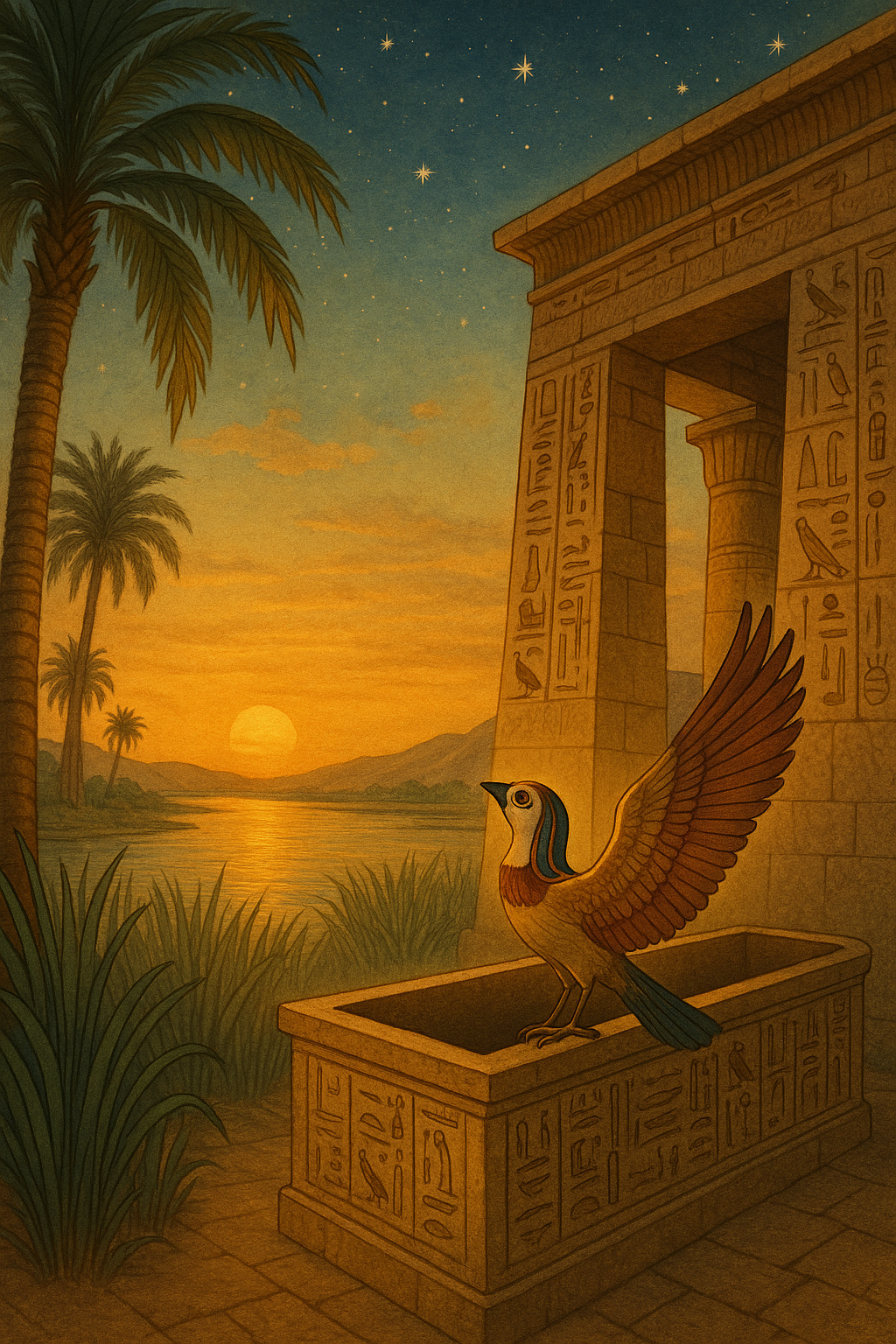
🐍 Chapter 2: The Osiris Code, Death, Resurrection & the First Judged Soul
“Djed Medu, Osiris Un-nefer di ankh djet.”
“Words spoken, Osiris the Good Being gives eternal life.”
Book of the Dead, Spell 1
To understand the Egyptian afterlife, you must first meet the one who mastered it.
Osiris, god of the dead, green-skinned ruler of the underworld, was not just a deity. He was a prototype. A mythic memory of what it means to die, be dismembered, and rise again.
The tale is sacred code: Osiris, once a king of Egypt, was murdered by his jealous brother Set. His body was hacked into pieces and scattered across the land. His wife, Isis, with the help of Nephthys, retrieved and reassembled him, anointing each fragment, whispering spells, breathing memory into death. With her magic, he rose once more. Not to rule the living, but to reign over the dead.
This myth was not symbolic to the Egyptians, it was a map. Every soul who died was called an ‘Osiris“ in the funerary texts. You didn’t just go to Osiris. You became him.
His journey, betrayal, dismemberment, resurrection, became the core model of what it means to die rightly. To pass through darkness and emerge eternal. To be judged, and to rise.
Osiris was not alone. With him stood Ma’at, Anubis, Thoth. Together they formed the sacred tribunal. And it was his throne, the throne of Osiris, that every soul would approach to be weighed, measured, and possibly glorified.
"Ankh em Ma’at, djed n Osiris."
“Life is in Ma’at, says Osiris.”
Coffin Texts, Spell 1130
This is the Osiris Code: To die is not to end. To die is to be judged. To be judged is to return.
⚡ TL;DR
- Osiris, a king and god, was murdered and resurrected by Isis, becoming lord of the underworld.
- His myth became the template for every Egyptian soul’s journey after death.
- The dead were identified with Osiris, hoping to follow his path from death to eternal life.
- He presides over the final judgement, weighing hearts and granting immortality.
- To understand Osiris is to understand the sacred mirror of the soul’s return.
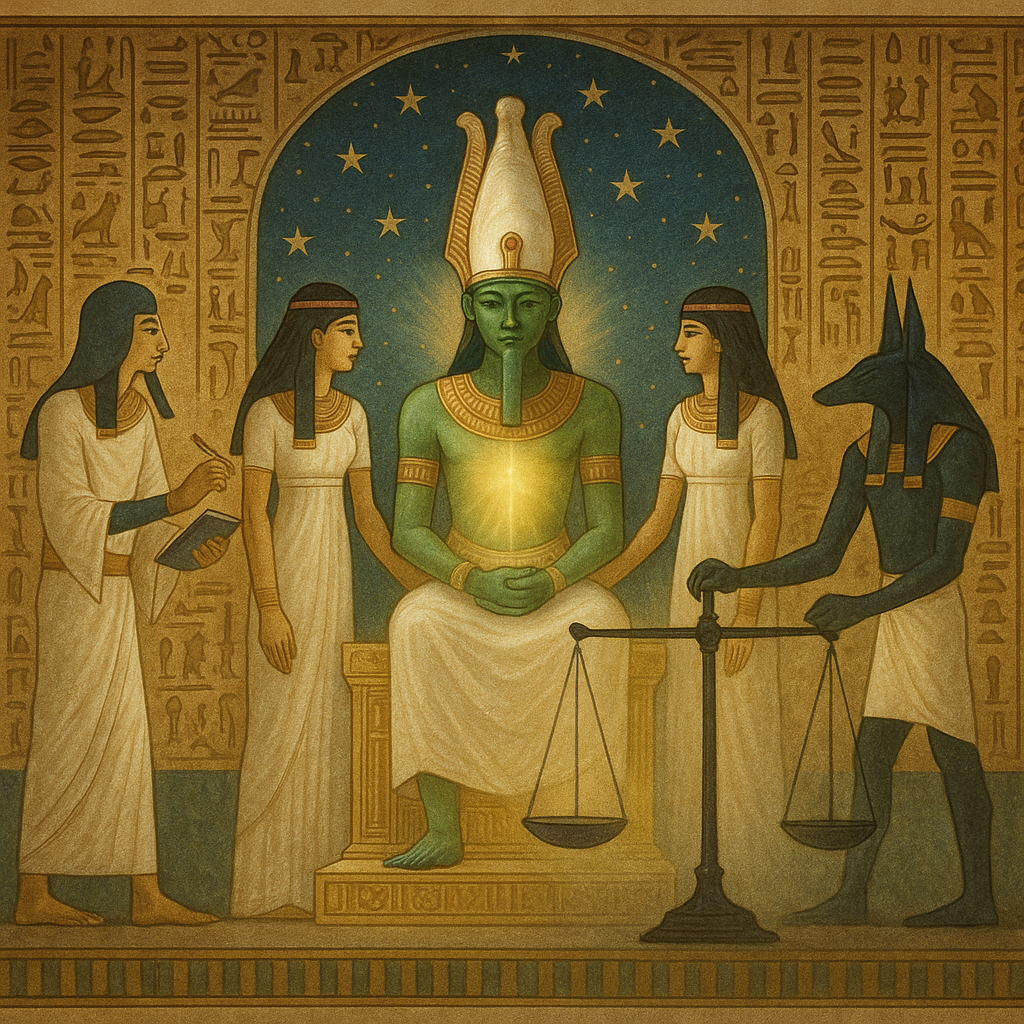
🦅 Chapter 3: The Ba, the Ka, and the Akh ,Soul Anatomy of the Immortals
“Ba ka akh ankh djet.”
“Ba, Ka, Akh, to live eternally.”
Coffin Texts, Spell 214
The Egyptians believed the human being was not one soul, but many. A constellation of parts, each with its own role in life, death, and eternity.
The Ka was the double, your life-force twin. It lived alongside you, invisible, animated by food, ritual, and offerings. When you died, your Ka remained in the tomb, sustained by prayers and sustenance left by the living.
The Ba was the winged soul, your personality, your unique essence. It could fly between worlds, return to visit loved ones, or journey through the Du”st. Often depicted as a bird with a human head, the Ba gave motion to the soul. But at night, it returned to the tomb, to reunite with the Ka.
When Ba and Ka embraced in harmony, a third form was born: the Akh.
The Akh was immortality itself, the transfigured soul, radiant, luminous, divine. It moved among the stars. It sat beside Osiris. It passed judgement and lived forever in the Field of Reeds or as a shining star in the northern sky.
This wasn’t automatic. It had to be earned, by living in Ma’at, by remembering the rituals, by preserving the body through mummification. The Akh was not just the dead made divine. It was the initiated made eternal.
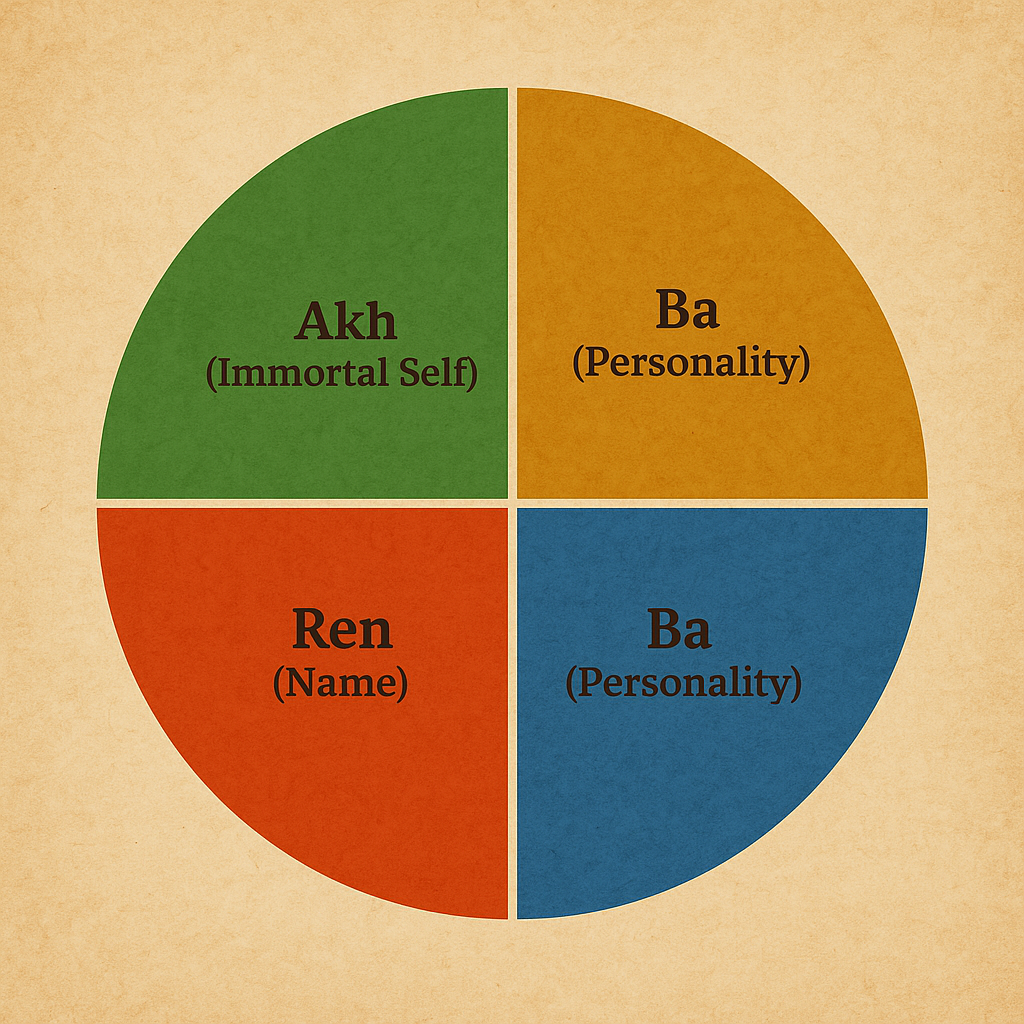
“Nuk akh n khemenu.”
“I am an Akh from Hermopolis.”
Book of the Dead, Spell 26
To be an Akh was to shine with the fire of Ra. It was to die rightly, rise transformed, and live forever in the company of the gods.
⚡ TL;DR
- The Egyptian soul had multiple parts: Ka (life-force), Ba (spirit-self), and Akh (immortal light-being).
- The Ka stayed near the tomb, sustained by offerings. The Ba travelled between realms.
- The Akh formed when the Ka and Ba were harmonized, it was the transfigured, divine self.
- To become an Akh was to achieve eternal life, radiant, free, and divine.
- This soul anatomy was at the heart of all funerary practices and resurrection rites.
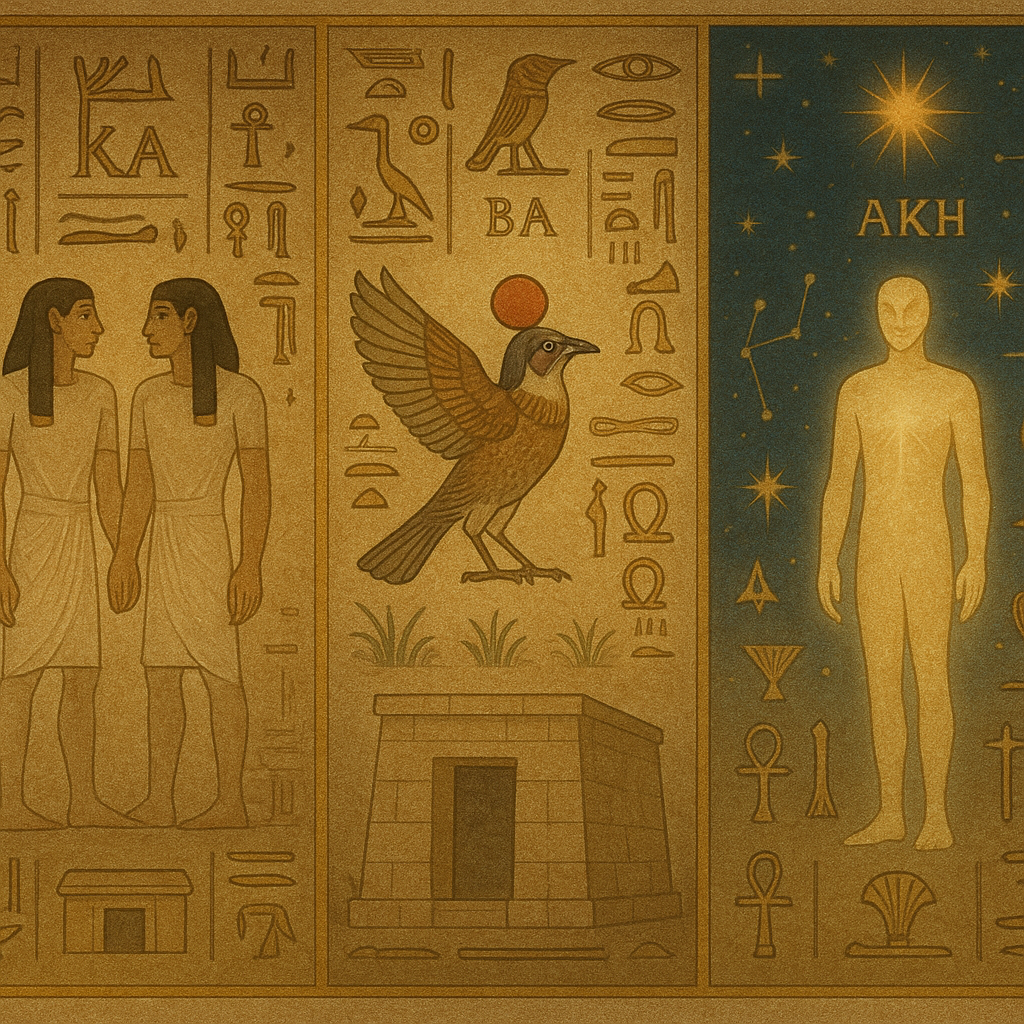
⚖️ Chapter 4: Living in Ma’at, The Feather of Truth
“Ma’at kheru ankh djet.”
“True of voice, life eternal.”
Book of the Dead, Spell 125
Ma’at was more than a goddess. She was the cosmic code, the principle of harmony, balance, justice, and divine order.
To live in Ma’at meant to live truthfully, with integrity, compassion, reverence for life, and devotion to the rhythm of nature. In her name, Egypt was governed, rituals were enacted, and judgement was rendered both in life and in death.
Ma’at’s symbol was the ostrich feather. Light, pure, symmetrical, it became the ultimate standard by which the heart was weighed in the Hall of judgement. The soul’s conscience was not judged by belief or dogma, but by alignment with truth.
Even Pharaohs were said to “eat Ma’at, live by Ma’at, speak Ma’at.” And in death, the phrase “true of voice” marked a soul who had passed the test, one whose life resonated with the eternal song of the cosmos.
“Ankh Ma’at heru neteru.”
“Ma’at lives, the speech of the gods.”
Temple Inscriptions of Karnak
Without Ma’at, the universe would collapse into Isfet, chaos, disorder, injustice.
This was not mythology. It was law, ethic, and metaphysics in one: To live by Ma’at was to align the soul with eternity.
⚡ TL;DR
- Ma’at was both a goddess and the principle of universal balance, truth, and harmony.
- To live in Ma’at meant to live rightly, in honesty, justice, and reverence for life.
- The Feather of Ma’at was used in the afterlife to weigh the heart, truth vs guilt.
- “True of voice” meant the soul passed the judgement, in alignment with cosmic truth.
- Ma’at was the foundation of all order, social, spiritual, and eternal.
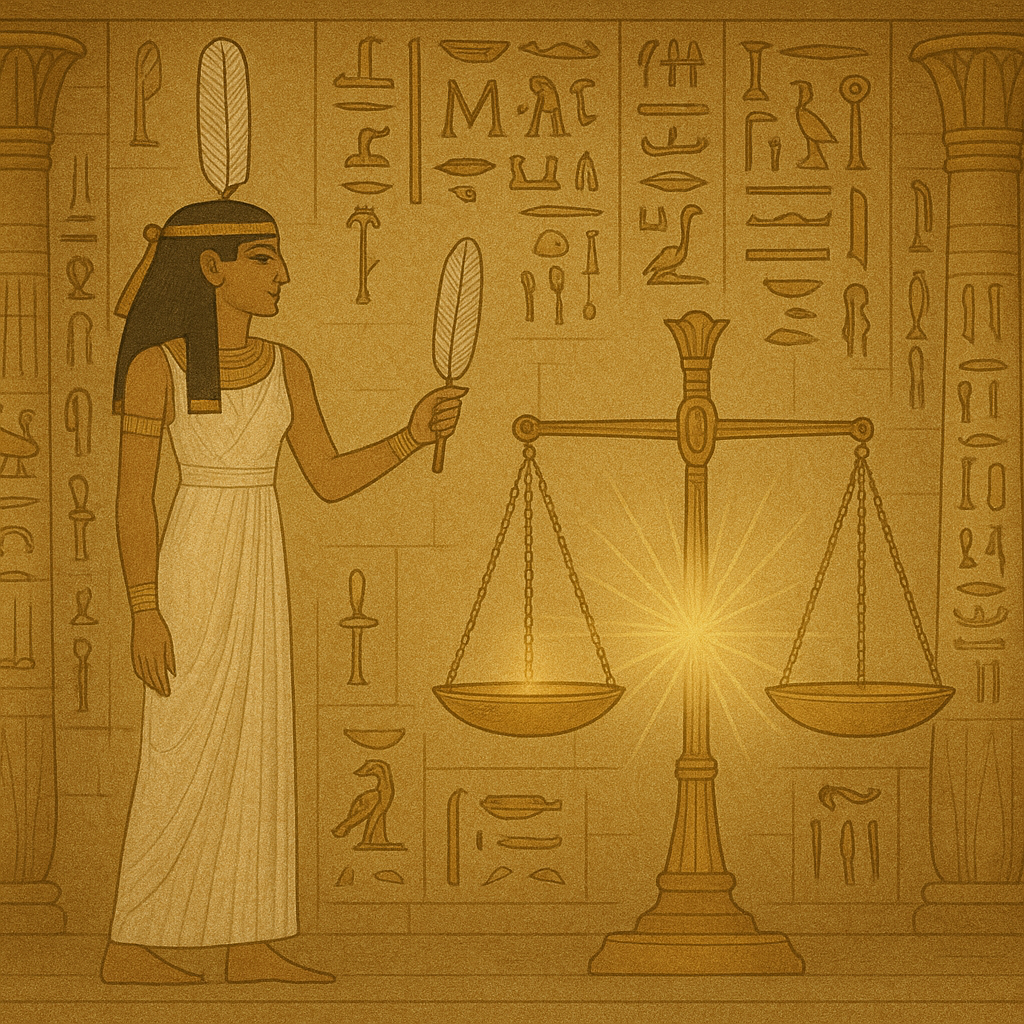
🏺 Chapter 5: Tombs, Mummification & the Resurrection Machine
“Djet ib her khet neter.”
“May the heart remain in the divine body forever.”
Book of the Dead, Spell 27
To the Egyptians, the body was not a shell to be discarded, it was the temple of the soul. A sacred vessel encoded with cosmic function. To preserve it was not superstition. It was resurrection science.
Mummification was an alchemical act, a transmutation of flesh into djet, the eternal form. With each bandage, an incantation. With each anointing, a spell. The process took 70 days and mirrored Osiris’s own death, dismemberment, and rebirth.
Canopic jars housed the organs, lungs, liver, stomach, intestines, guarded by the four Sons of Horus. The heart, seat of conscience, was left intact, it would face the feather. The brain? Removed. It was not considered the seat of thought. The ib (heart-mind) was the soul’s true compass.
The tomb was not just a grave. It was a resurrection machine.
Its walls spoke spells. Its objects, food, furniture, weapons, cosmetics, were activated by ritual. Even the coffin was inscribed with sacred texts: “rise in peace,” “see the light,” “walk among the stars.”
And before sealing the tomb, the priest would perform the Opening of the Mouth, touching the lips, eyes, and ears of the mummy with ritual tools, reactivating speech, sight, and hearing for the afterlife.
“Sa ankh kheru em peret heru.”
“Protection, life, and voice in the coming forth by day.”
Tomb Inscriptions, New Kingdom
This was not for kings alone. The democratization of the afterlife, seen in the Coffin Texts and Book of the Dead, allowed any soul, properly buried and remembered, to rise as an Akh.
Burial was not about remembering the dead. It was about activating the soul.
⚡ TL;DR
- Mummification preserved the body so the soul (Ba and Ka) could reunite and form the Akh.
- The tomb was a resurrection chamber, filled with spells, items, and sacred architecture.
- Each part of the burial process was symbolic, aligning with Osiris’s resurrection myth.
- The Opening of the Mouth ritual reawakened the senses of the dead for the afterlife journey.
- Proper burial was not superstition, it was soul-technology for eternal return.
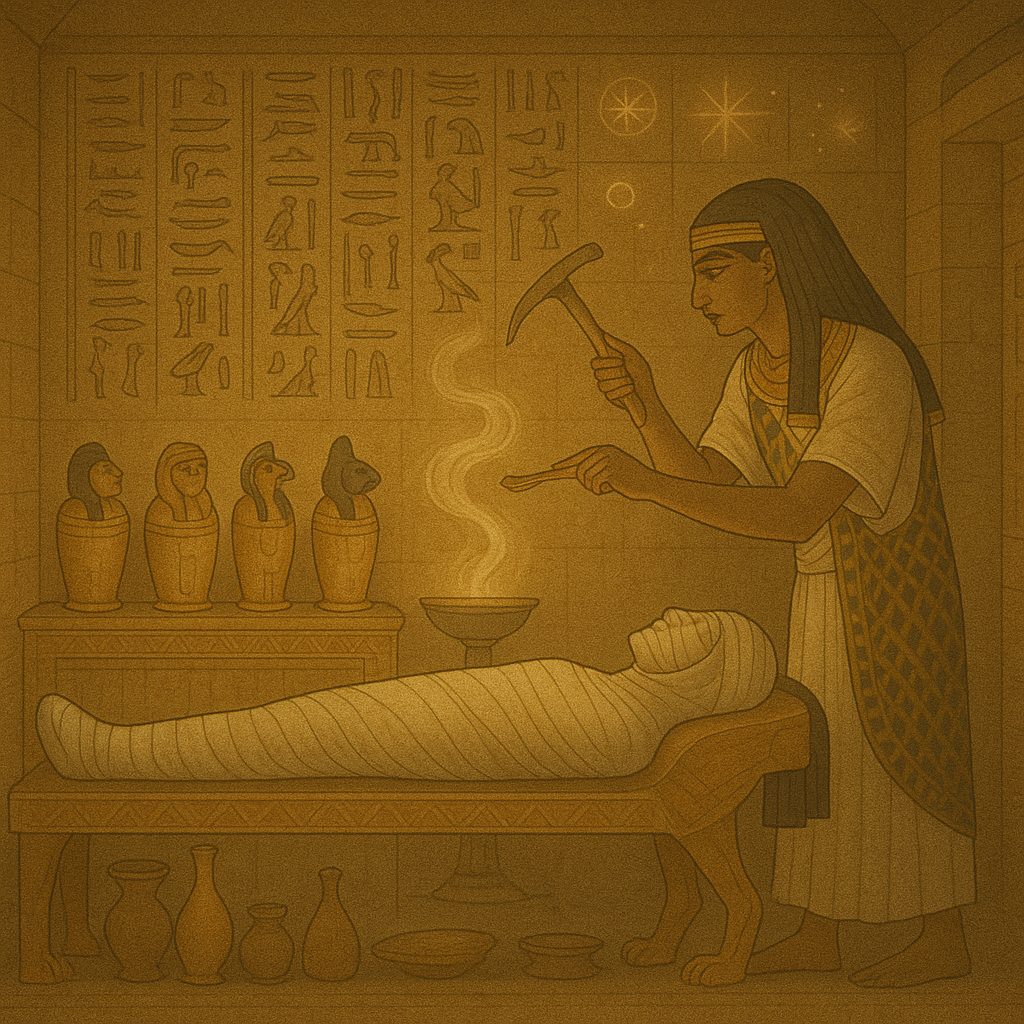
🌒 Chapter 6: Into the Du“at, The Map of the Hidden World
“Sheta Du“at n Kheperu.”
“The Du”st is the mystery of transformations.”
Book of Gates, Hour 1
The Du”st was not hell. It was not heaven. It was the invisible world beneath all things, a night-sea realm of gods, monsters, gates, rivers, stars, and renewal.
It was where Ra travelled at night on his solar barque, facing serpent-lords and shadow beasts before rising anew with the dawn. It was where the dead journeyed after the tomb, not to rest, but to remember.
The Du”st was often mapped as 12 hours, or gates, echoing the sun’s descent into night. Each “hour” was both a region and a trial, guarded by deities and sealed with secret names. Only the prepared could pass.
This underworld was both psychological and cosmic, a mirror of the inner landscape. Each terrain reflected a soul-state. Lakes of fire. Caverns of knives. Rivers of memory. Fields of stars.
Those without memory, without Ma’at, were devoured by chaos beings. But those with guidance, spells, and heart-lightness could move through the Du”st and emerge radiant, like Ra at dawn.
“Sekhet Aaru neferu, hena Ra em peret.”
“The beautiful Field of Reeds, with Ra at the rising.”
Book of the Dead, Spell 110
The tomb spells, especially the Book of Two Ways and Amduat, depicted the Du”st in diagrams. These weren’t symbolic. They were functional maps. Schematics for the soul. Instructions for the afterlife.
To know the Du”st was to know the self beyond death.
⚡ TL;DR
- The Du”st was Egypt’s underworld, a realm of transformation, not punishment.
- It contained gates, gods, monsters, and secret trials, mapped in 12 hours or stages.
- Spells from the Book of the Dead, Book of Gates, and Amduat served as navigational tools.
- Souls with memory, Ma’at, and proper ritual could pass through safely and rise renewed.
- The Du”st is a spiritual map, of the cosmos, of the dead, and of the inner soul.
Visual Map: The Du”st as the Soul’s Trial
Below the world lies a mirror, filled with fire, stars, guardians, and remembrance. The Du”st is where Ra dies to rise again, and where the soul is forged eternal.
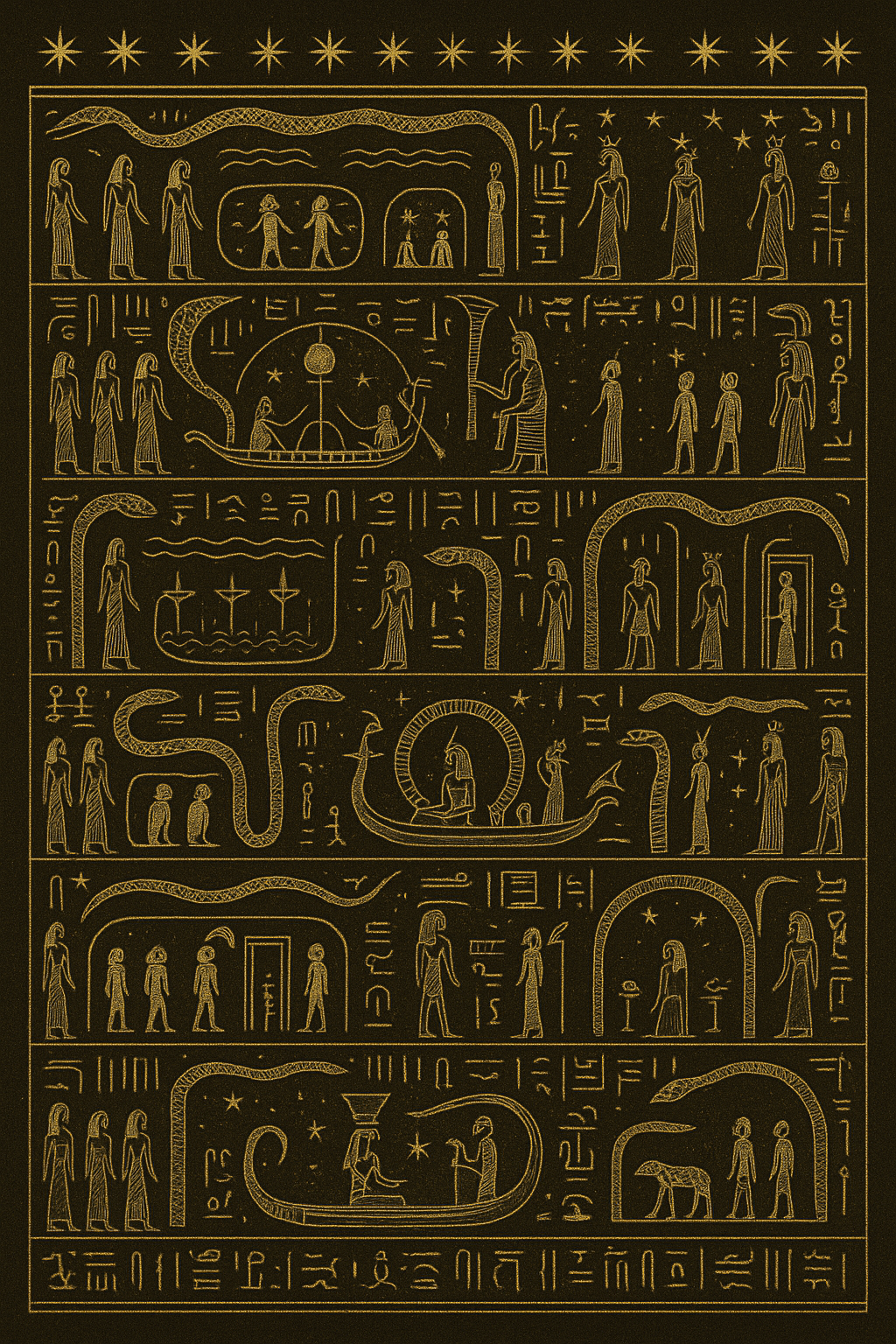
🗺️ Visual Map: The Journey Through the Du”st
Trace the sacred path of the soul from death to divinity:
- Death & Tomb: The gateway opens, are you prepared?
- The Du”st: A labyrinth of serpents, fire lakes, and divine tests, can you remember the passwords?
- Hall of Ma’at: Your heart is weighed, will it balance the feather?
- The Confessions: You speak before 42 judges, can you stand in truth?
- judgement: Akh or Ammit, transfiguration or annihilation?
- Field of Reeds: Joy, peace, remembrance, but is it the final goal?
- Star Ascent: The Akh rises beyond time, light without form.
Beyond paradise lies the return, kheperu, the cycle of transformation. Will you come back as memory, or mission?
This is not mythology. It’s a mirror. Each phase is alive within you, now.
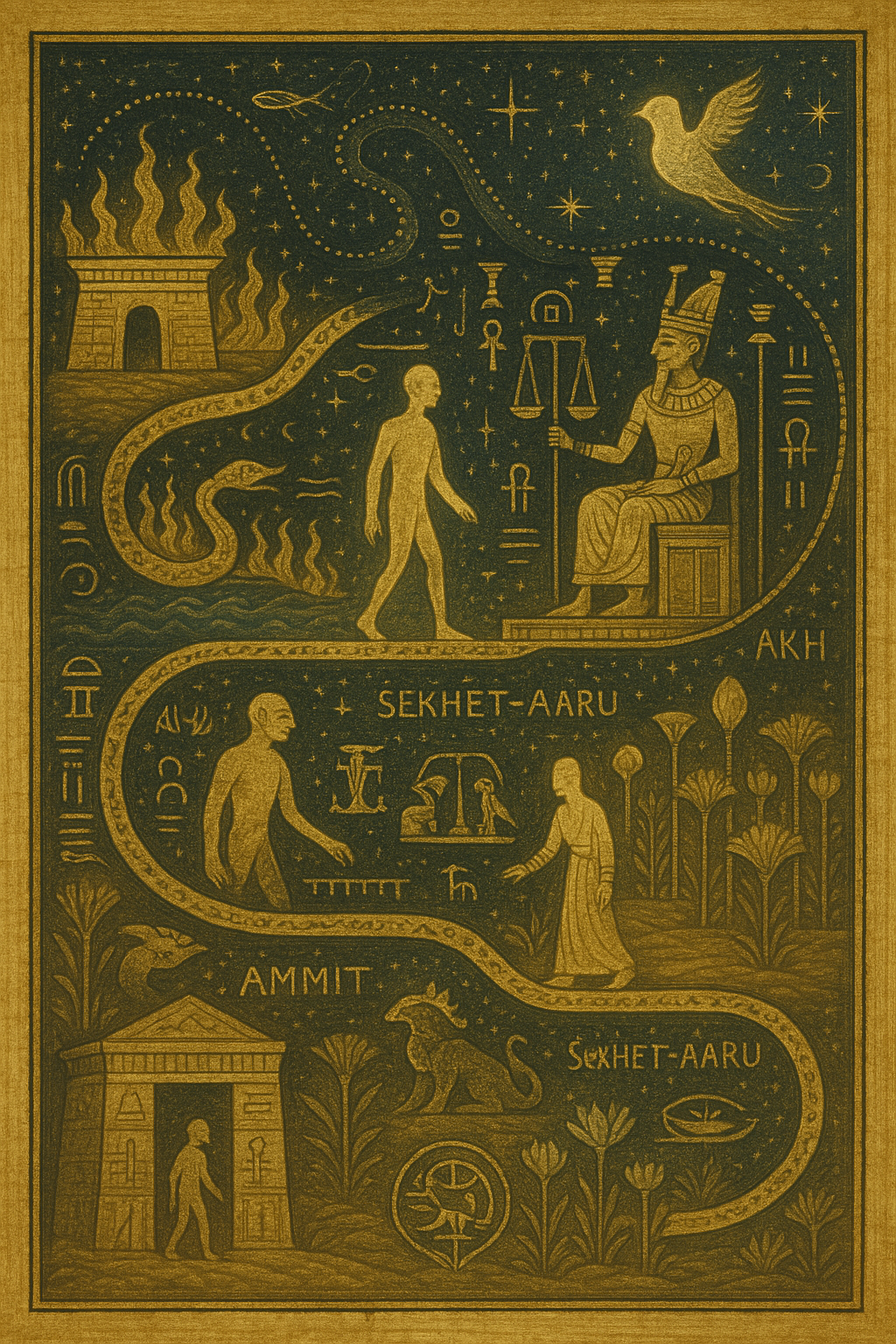
🚪 Chapter 7: Trials, Gates & the Soul’s Passwords
“Djed medu, sa khet n Du”st.”
“Words spoken, protection against the trials of the Du”st.”
Book of the Dead, Spell 144
The Du”st was not a free passage. It was guarded. Sealed. Filled with gatekeepers, riddles, and trials.
At each threshold, the soul was met by a guardian, sometimes divine, sometimes monstrous. They demanded names, passwords, spells, and above all, remembrance. This was not superstition. It was initiation.
Knowing the names of gates, of demons, of boats and rivers, was power. To name something in the Egyptian worldview was to master its essence. To pass through a gate was not just to travel, it was to prove one’s awareness of reality’s deeper structure.
Some gates burned. Some whispered lies. Others asked questions:
- “Who are you?”
- “Where do you come from?”
- “Have you spoken falsely?”
- “What is the name of the serpent who lives in the fire?”
In Spell 144 of the Book of the Dead, 21 gates are listed, each with a deity, a challenge, and a formula. These were not metaphors. They were spiritual encryption keys.
The prepared soul could answer: “I am pure. I am Ma’at. I know the secret name. Let me pass.”
“Nuk sa n Asar, djed ren n neteru.”
“I am the son of Osiris, I speak the names of the gods.”
Coffin Texts, Spell 335
To pass through the gates of the Du”st was to prove you had remembered, not belief, but identity. To forget was to fall. To know was to rise.
⚡ TL;DR
- The Du”st contains gates, each with guardians who demand names, passwords, and purity.
- These passwords were recorded in spells like Spell 144 of the Book of the Dead.
- Knowledge of secret names gave the soul power to pass safely, ignorance meant failure.
- To “remember” was to align with Ma’at and claim one’s true divine identity.
- Passing the gates was an act of spiritual mastery, a soul hacking its way through illusion.
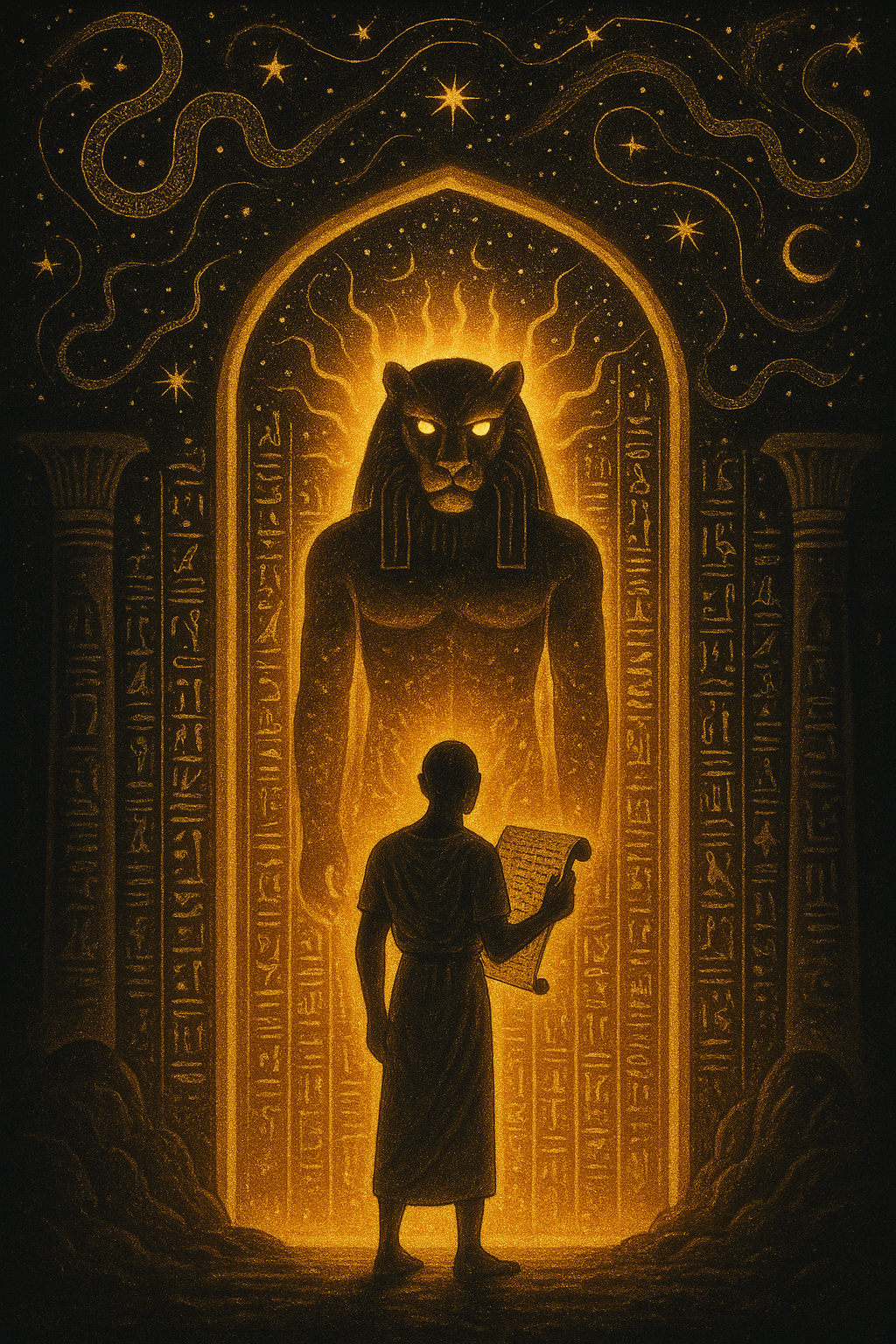
⚖️ Chapter 8: The Weighing of the Heart, Scales of the Invisible Self
“Ib n kheru ma”a Ma’at.”
“The heart speaks truth in the presence of Ma’at.”
Book of the Dead, Spell 125
This is the scene etched into eternity: a soul stands before the Scales of Judgement. On one side, the heart. On the other, the feather of Ma’at. Anubis adjusts the scale. Thoth records. Osiris watches in silence. Ammit, the Devourer, waits, still and hungry.
To the Egyptians, this was not metaphor. It was the ultimate truth test. Not judged by belief. But by weight.
The ib (heart) was the seat of conscience. Every deed, every motive, every silence, stored there. If the heart was light, aligned with Ma’at, the soul passed. If the heart was heavy, with guilt, deception, injustice, it was cast to Ammit, and the soul ceased to be.
This was not hell. It was annihilation. The second death. The failure to become Akh.
To ensure success, Egyptians buried the dead with a heart scarab amulet, inscribed with Spell 30B, a plea to the heart: “Do not stand as witness against me.”
“Neb ib, ma”a Ma’at.”
“Master of the heart, who balances with Ma’at.”
Tomb of Ani, New Kingdom
In this moment, all illusions fall. No priest. No spell. No offering can override the heart. It speaks, and it weighs.
The judgement is not punishment. It is resonance. Either you are in Ma’at, or you are not.
⚡ TL;DR
- The heart was weighed against the feather of Ma’at to determine the soul’s fate.
- If light (just), the soul passed to paradise; if heavy, it was devoured by Ammit, ceasing to exist.
- The judgement was not moralistic, but vibrational, did your life align with truth, balance, and cosmic law?
- The heart scarab was a protective amulet, asking the heart not to betray the soul at judgement.
- This scene, Spell 125, is one of the most sacred moments in Egyptian afterlife belief, the soul’s mirror.
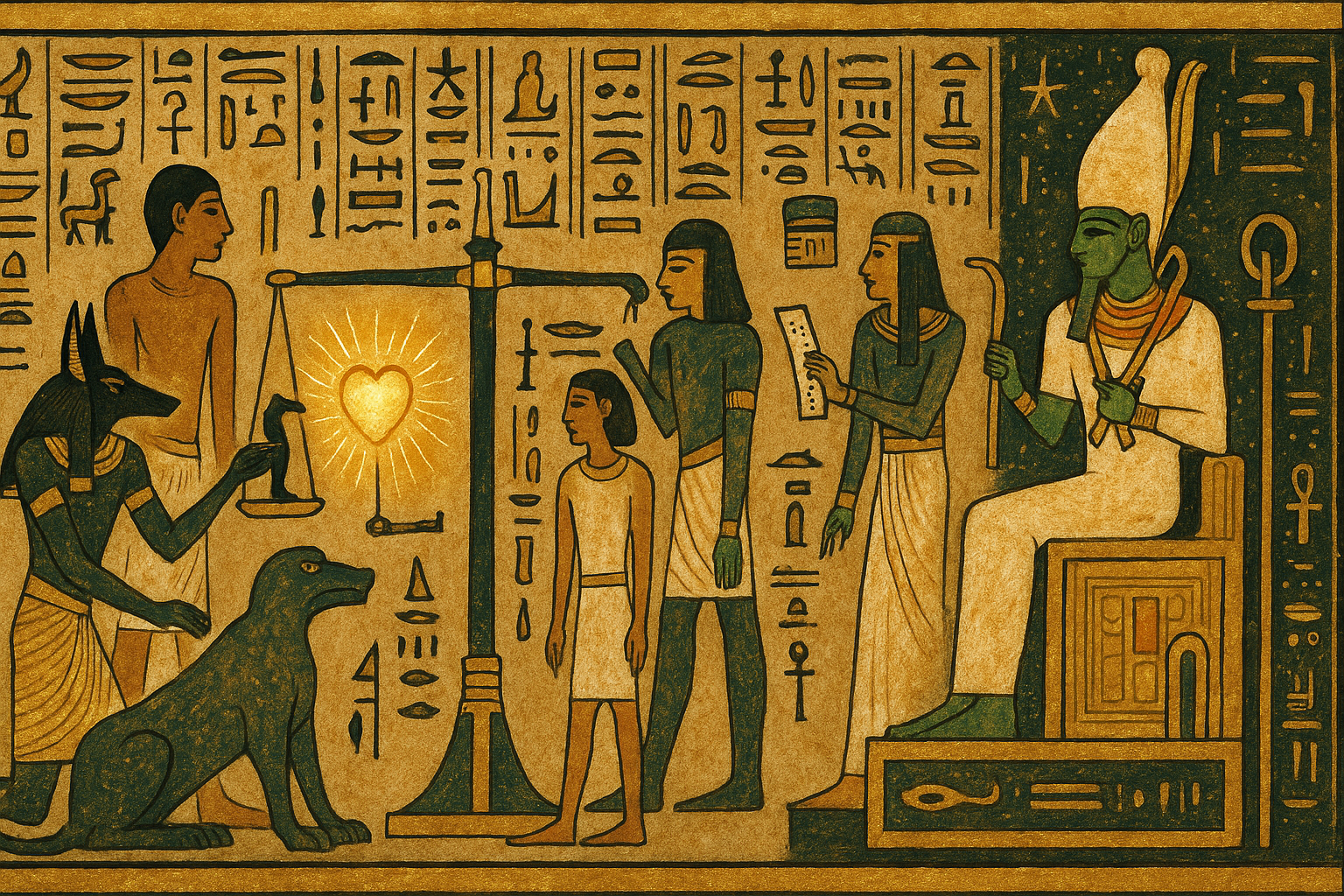
📜 Chapter 9: The 42 Confession, Soul as Self-Witness
“Nuk weba heru ma”a Ma’at.”
“I am purified, one who walks in Ma’at.”
Book of the Dead, Spell 125
Before the weighing of the heart, the soul was called to speak. Not in protest. Not in prayer. But in truthful declaration.
This was the Negative Confession, 42 statements to 42 divine assessors. Each representing a law of Ma’at. Each a moral code etched into the cosmos itself.
The soul did not beg for mercy. It proclaimed its integrity:
- “I have not lied.”
- “I have not stolen.”
- “I have not slain unjustly.”
- “I have not polluted the water.”
- “I have not raised my voice in anger.”
- “I have not shut my ears to truth.”
This was not a checklist of piety. It was a soul-audit, a spoken alignment with universal law.
The 42 judges represented the neteru, divine intelligences, each overseeing a moral domain. The soul that had forgotten Ma’at would tremble. The one that remembered, would resonate.
“Nuk sheri Ma’at, nuk ankh Ma’at.”
“I am the child of Ma’at, I live Ma’at.”
Tomb of Tjai, 18th Dynasty
In a world of image and illusion, the 42 Confessions were a mirror. Not for the gods. For the soul itself.
To pass the judgement, the soul must speak as one who remembers who they are.
⚡ TL;DR
- The 42 Confessions were statements the soul made before judgement, declarations of purity and alignment with Ma’at.
- Each confession addressed a moral law and a divine judge.
- Unlike modern sin-confession, this was a self-witnessing, not guilt, but remembrance of truth.
- The process affirmed that integrity, not belief, determined the soul’s lightness and passage.
- The soul that remembered its truth had nothing to fear, only to affirm.
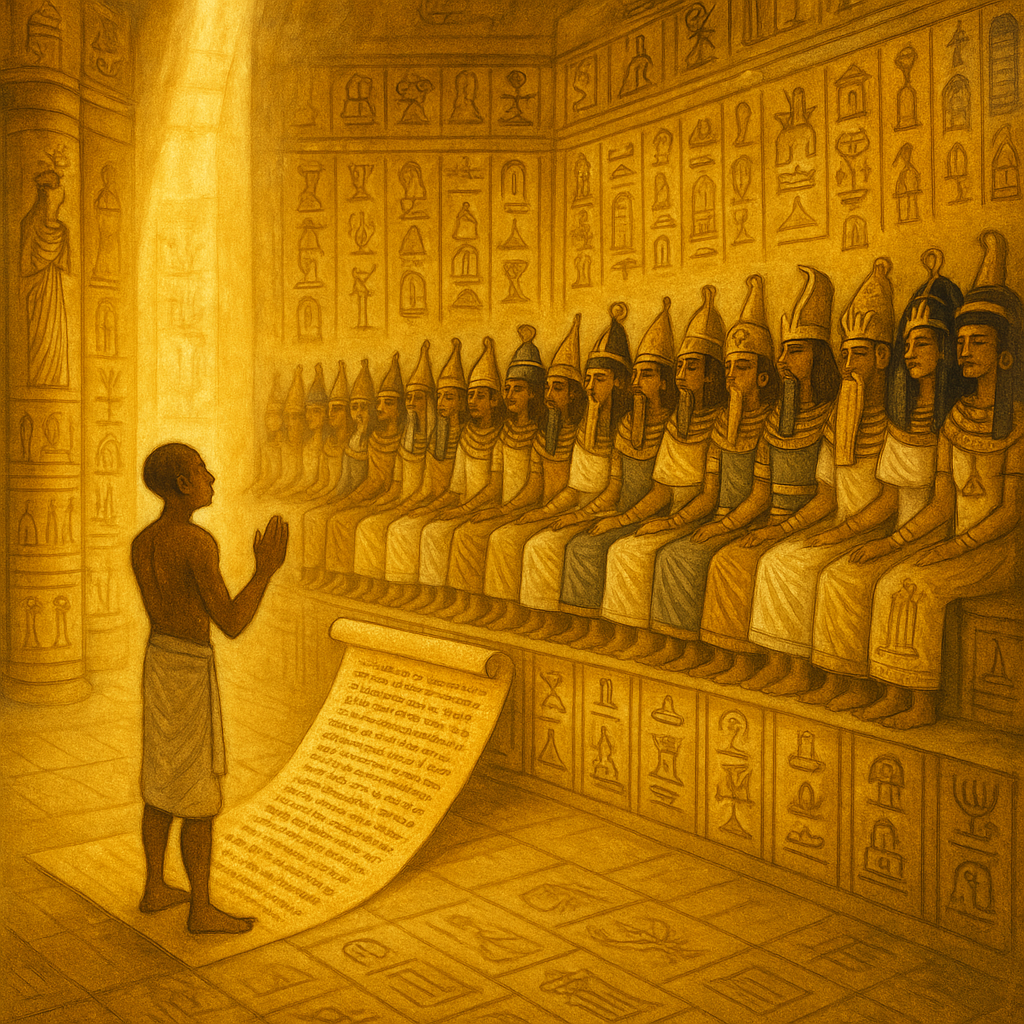
🐊 Chapter 10: Ammit the Devourer, The Second Death
“Setem i, Ammit em sep.”
“The heavy heart, Ammit in waiting.”
Book of the Dead, Spell 30B
She sits beside the scale, silent, patient, terrifying. A chimera of crocodile, lion, and hippopotamus. The three fiercest beasts of Egypt, fused into one.
Ammit, the “Eater of the Dead.” Not a demon. Not evil. A force of cosmic consequence.
She does not chase the soul. She does not torment it. She waits. If the heart is heavy with falsehood, betrayal, violence, greed, she opens her jaws and devours it whole.
The soul is not punished. It is erased. Forgotten. Unmade.
This was called the Second Death. Worse than pain, it was non-being. A soul that failed to become Akh. A spark that never found resonance. A life that collapsed into itself.
Ammit did not act unjustly. She acted as a final filter. If you did not align with Ma’at, you did not continue. You did not deserve eternity.
“Nuk sha Ammit, nuk weba n Ma’at.”
“I am not food for Ammit, I am the purified of Ma’at.”
Book of the Dead, Spell 125
To the Egyptians, true hell was not fire. It was forgetting. The soul unremembered, the name unspoken, the spark extinguished.
And so the great lesson: Live light. Die aligned. Remember truth, or be forgotten forever.
⚡ TL;DR
- Ammit was the devourer of unworthy souls, a beast of judgement, not punishment.
- If a soul’s heart was heavy, Ammit consumed it, causing the “Second Death”, annihilation.
- This was not cruelty, but cosmic balance, the unfit did not proceed into eternity.
- Egyptian hell was not pain, it was oblivion: to be erased from the Book of Life.
- The greatest sin was to forget truth and fall out of resonance with Ma’at.
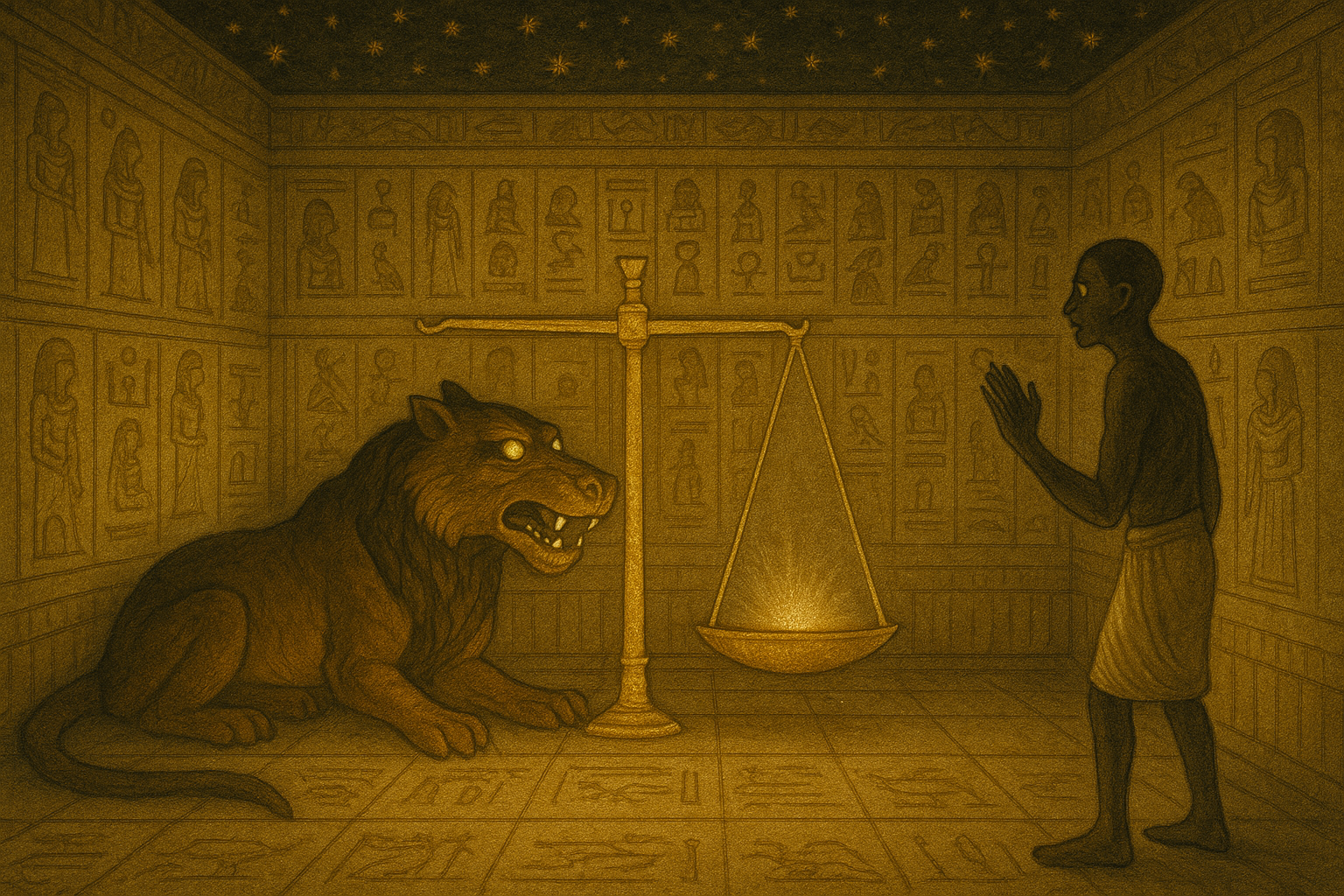
🌾 Chapter 11: The Field of Reeds, Paradise as Remembrance
“Sekhet Aaru nefer, hena netjeru.”
“The beautiful Field of Reeds, among the gods.”
Book of the Dead, Spell 110
If the soul passed the judgement, light of heart, aligned with Ma’at, it would enter Sekhet Aaru, the Field of Reeds.
This was not a realm of clouds and harps. It was a perfected Egypt, golden fields, gentle rivers, fruit trees, blue lotuses, and luminous sky. A place where the soul lived in joy, farming without toil, walking among ancestors and deities in eternal celebration.
Everything one loved, purified. Everything one lost, restored.
To arrive here was not a reward. It was a return. Not a gift from gods, but the culmination of memory, virtue, and gnosis.
The soul would have a body again, but not of flesh. A light body. A spirit-body that needed no food, yet received offerings from the living in the tomb. These offerings kept the connection between worlds alive.
"Ankh djet, her Aaru."
“Life eternal, upon the Field of Reeds.”
Papyrus of Ani, 18th Dynasty
The soul was now an Akh, transfigured, luminous, divine. It could speak with gods. Sail with Ra. Merge with the stars.
Paradise was not given. It was earned, by remembrance, by truth, by transformation.
⚡ TL;DR
- Sekhet Aaru, the Field of Reeds, was the Egyptian paradise for souls judged worthy.
- It was a perfected mirror of Egypt: fertile, peaceful, joy-filled, luminous.
- The soul received a light body and lived among gods, ancestors, and eternal beauty.
- To reach it was not a gift, but the fruit of alignment with Ma’at and mastery of the Du”st.
- It was the final flowering of the Akh, radiant, free, and eternal.
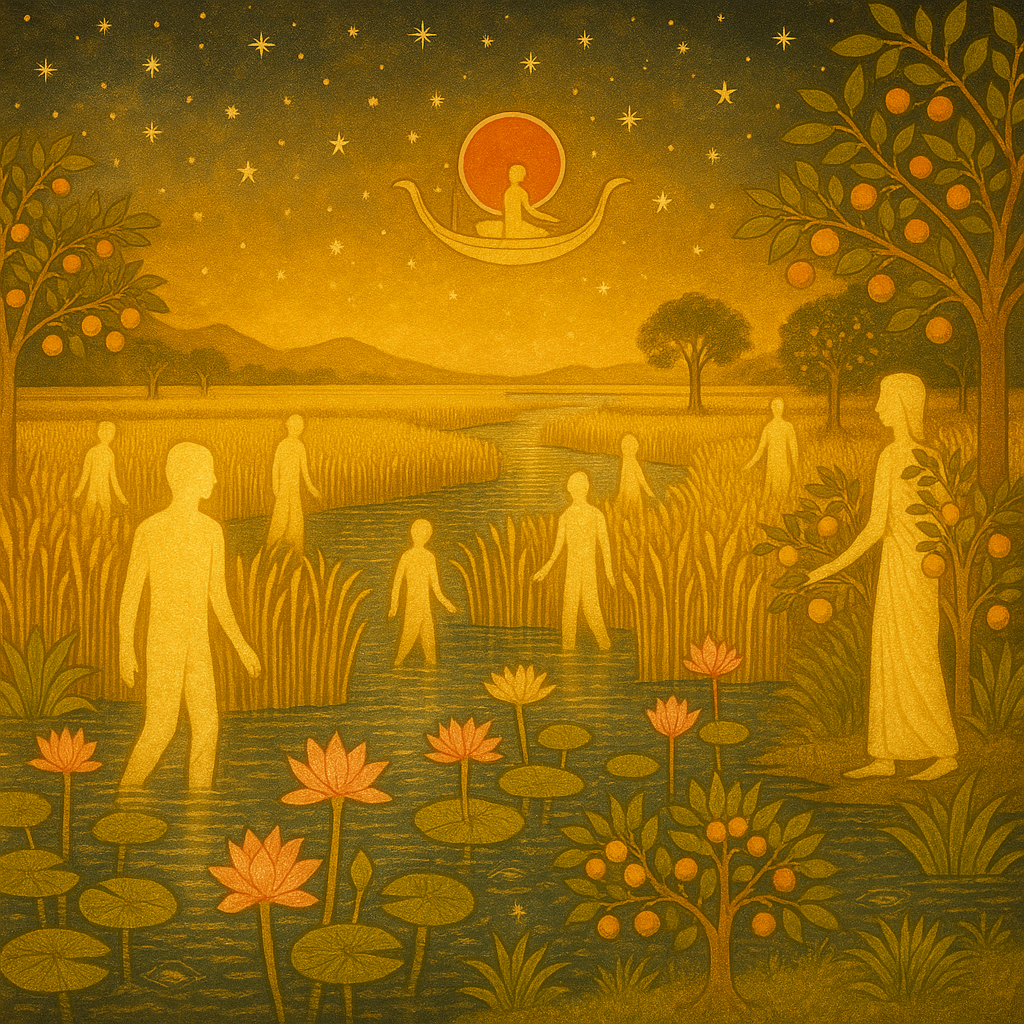
✨ Chapter 12: The Akh Ascends, Star-Soul of the Immortals
“Nuk akh n pet, nuk seshemu ba”u.”
“I am a shining one of the sky, I lead the souls.”
Pyramid Texts, Utterance 302
The final transformation was not into a ghost or ancestor, but into light. Into an Akh.
We”ve met this word before, but now it reveals its deepest meaning. The Akh was not just the reunited Ba and Ka. It was the divinized soul, perfected through judgement, initiation, and remembrance.
An Akh was not bound to tomb or earth. It could move among stars, appear in dreams, sail with Ra, commune with the gods, and protect the living.
It was often depicted as a luminous bird, sometimes a crested ibis or glowing heron, flying freely above the land. A being of awareness, will, and eternal presence.
In the Pyramid Texts, the soul prays: “May I become a star that never sets.” And so the Akh did, becoming part of the imperishable stars of the northern sky, who never dipped below the horizon, who shone forever.
“Nuk akh djet, her sekhet pet.”
“I am the radiant one, dwelling in the field of stars.”
Coffin Texts, Spell 1053
The Akh did not simply survive death. It triumphed over illusion, over chaos, over forgetting. It was the result of lived Ma’at and sacred memory.
This is not myth. This is soul-tech. The blueprint of the eternal human.
⚡ TL;DR
- The Akh was the fully realised sou, radiant, divine, and free.
- It could travel among stars, guide the living, and commune with the gods.
- The Akh was not bound to body or tomb, it transcended form entirely.
- This was the soul’s reward: not rest, but radiance, awareness without end.
- The final destiny was not a place, but a state: to become light.
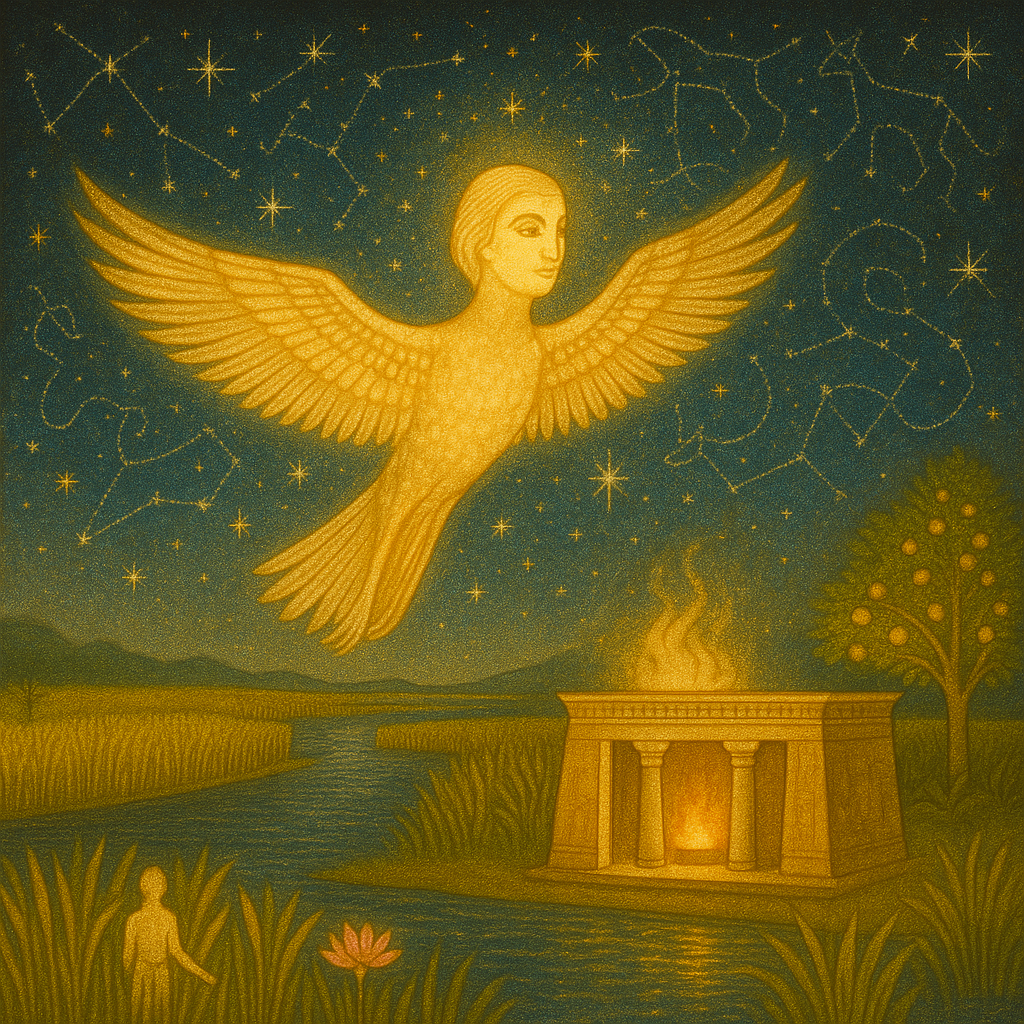
📖 Chapter 13: The Book of the Dead, Operating Manual for the Soul
“Ra nu peret em heru.”
“Book of Coming Forth by Day.”
Title of the Papyrus of Ani
What we call the Book of the Dead was never one single book. It was a living library, hundreds of spells, maps, instructions, and passwords, personalized for each soul, to navigate the afterlife.
The true title was Ra nu peret em heru, The Book of Coming Forth by Day. Because the goal was not rest. It was return. Awakening. Emergence into eternal light.
Copied onto papyrus and buried with the deceased, each scroll was a spiritual GPS, charting paths through the Du”st, invoking protective deities, listing the 42 Confessions, and providing names of gates and guardians.
Spell 125 became the centrepiece, the judgement scene, the weighing of the heart, the soul’s declaration of innocence. But other spells addressed every stage of the journey: how to breathe, speak, walk, transform into animals, summon boats, avoid serpents, pass fire-lakes, and become a star.
“Nuk peret em heru, djed n ba akh.”
“I come forth by day, says the radiant soul.”
Book of the Dead, Spell 2
The book was never passive. It required memory. The soul had to read it, know it, become it. To forget the words was to lose your way. To remember was to return.
The Book of the Dead was not mythology. It was a manual for immortalit, encoded, poetic, exact.
⚡ TL;DR
- The Book of the Dead was a sacred compilation of spells to guide the soul through the afterlife.
- Its true title was “The Book of Coming Forth by Day”, a guide to rebirth into the light.
- It included directions, passwords, hymns, transformation spells, and declarations for judgement.
- Each scroll was customized, buried with the dead, and designed to awaken memory in the Du”st.
- This was not myth, it was operating code for the soul’s return to eternity.
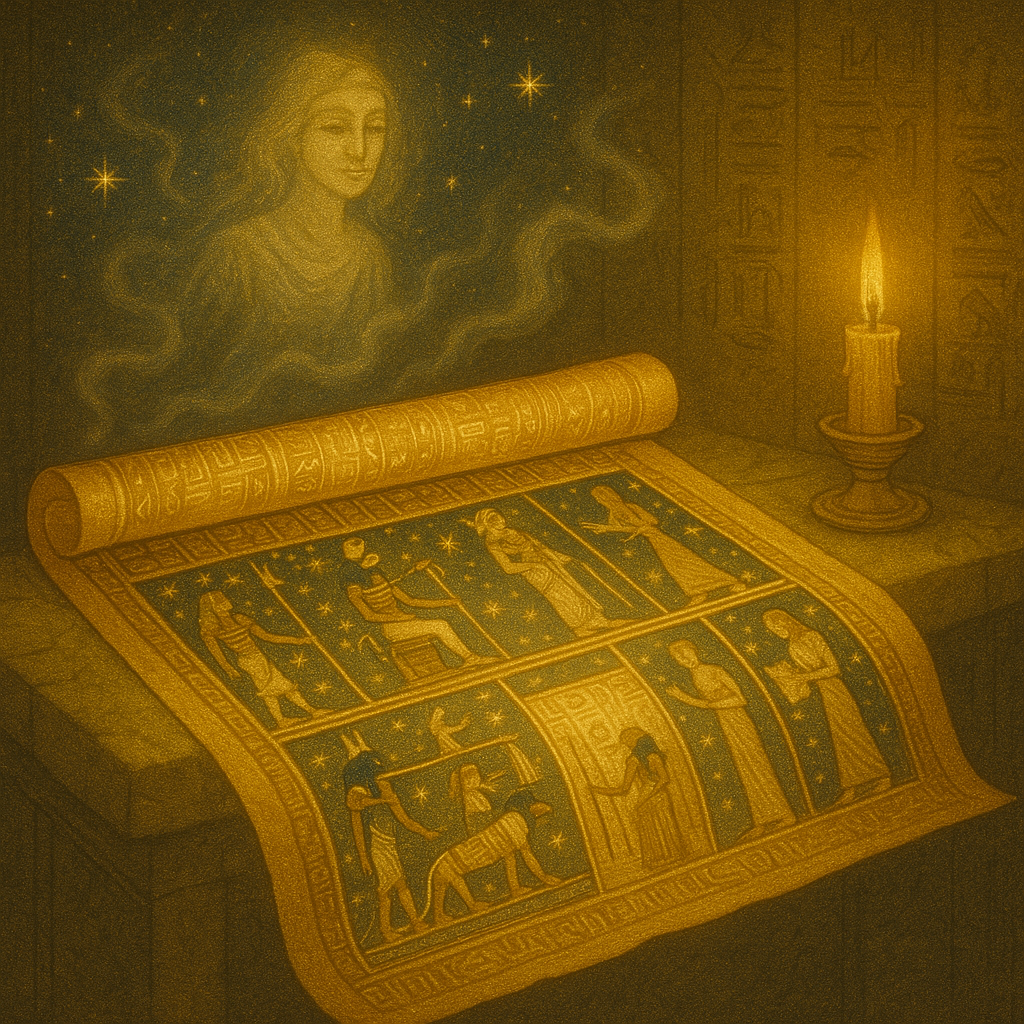
🕯️ Chapter 14: Living to Die Well, Preparing the Soul for Eternity
“Ankh em Ma’at, m kheru djet.”
“Live in Ma’at, and be justified forever.”
Tomb of Ptahhotep, 5th Dynasty
To the ancient Egyptians, life was not a race toward pleasure. It was a rehearsal for eternity.
Every action, every word, every offering was a seed planted in the afterlife field. They understood that how one lived shaped how one died, and what came after.
To die well was to live rightly: aligned with Ma’at, at peace with the gods, in harmony with land family, and memory.
The process began long before death. Sacred rituals, ethical living, care for the poor, honouring ancestors, speaking truth, offering food to the Ka of others, all were ways to build lightness in the heart.
And when death approached, preparations intensified. The body purified. The tomb inscribed. The spells copied. The priest consulted. The family gathered. The name spoken. The soul remembered.
This was not superstition. It was spiritual science. An embodied understanding that memory is currency, truth is weight, and alignment is immortality.
“Ma’at n ib, ankh n pet.”
“Truth in the heart, life in the heavens.”
Temple of Karnak, Middle Kingdom
Death was not feared. For the wise, it was awaited, as the great gate to continuity.
⚡ TL;DR
- Egyptian life was a preparation for death, and death was a preparation for eternity.
- Living in Ma’at (truth, balance, justice) was how one cultivated a light heart and radiant soul.
- Burial rituals, ethical conduct, and memory work all helped guide the soul in the afterlife.
- Dying well meant remembering, and being remembered, by name, by truth, by love.
- For the Egyptian initiate, eternity was not a fantasy, it was the goal of a life well lived.
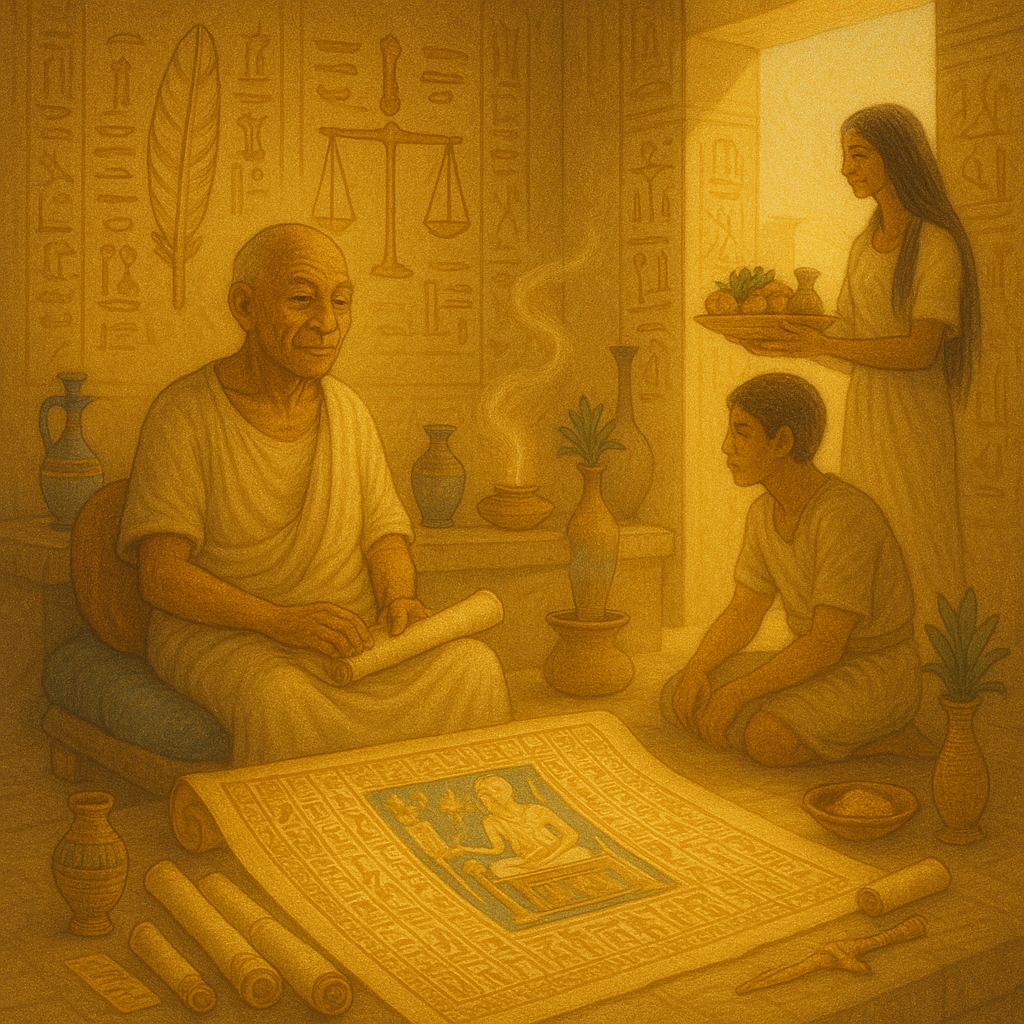
♻️ Chapter 15: The Return of the Soul, Rebirth, Memory & the Cosmic Cycle
“Kheperu em pet, kheper em ta.”
“Transformations in heaven, returnings upon earth.”
Book of the Dead, Spell 17
In Egyptian cosmology, death was not a final state. It was a portal in a cycle. To become an Akh was not to escape forever, it was to participate consciously in the rhythms of divine becoming.
Some souls remained in the Field of Reeds. Others chose to return, re-entering the cycle of life, reborn into time, veiled once more in forgetfulness, yet carrying echoes of past lives.
This was not punishment. It was mission.
Rebirth, called kheperu, was an act of divine will. The scarab beetle, symbol of Ra’s self-creation, rolled the sun across the sky each day, and rolled the soul through cycles of becoming. Life, death, return. Memory, forgetting, awakening.
The soul that returned without memory wandered. The one that remembered, changed the world.
“Nuk kheper djet, reni ankh.”
“I become again and again, I call forth life.”
Pyramid Texts, Utterance 601
And so the true initiate, even in the Field of Reeds, would choose to come again. To embody Ma’at on Earth. To build, to teach, to awaken others still trapped in illusion.
Death was never the end. It was always a return. The soul is not bound, it is becoming.
⚡ TL;DR
- Death marked a portal in an eternal cycle of becoming, not a final state.
- Some souls chose to return, reborn into time, often veiled in forgetfulness.
- Rebirth (kheperu) was symbolised by the scarab, constant renewal and divine will.
- The awakened soul returned not by force, but by choice, to live Ma’at in the world.
- The end of the journey is the beginning again, with memory, mission, and light.
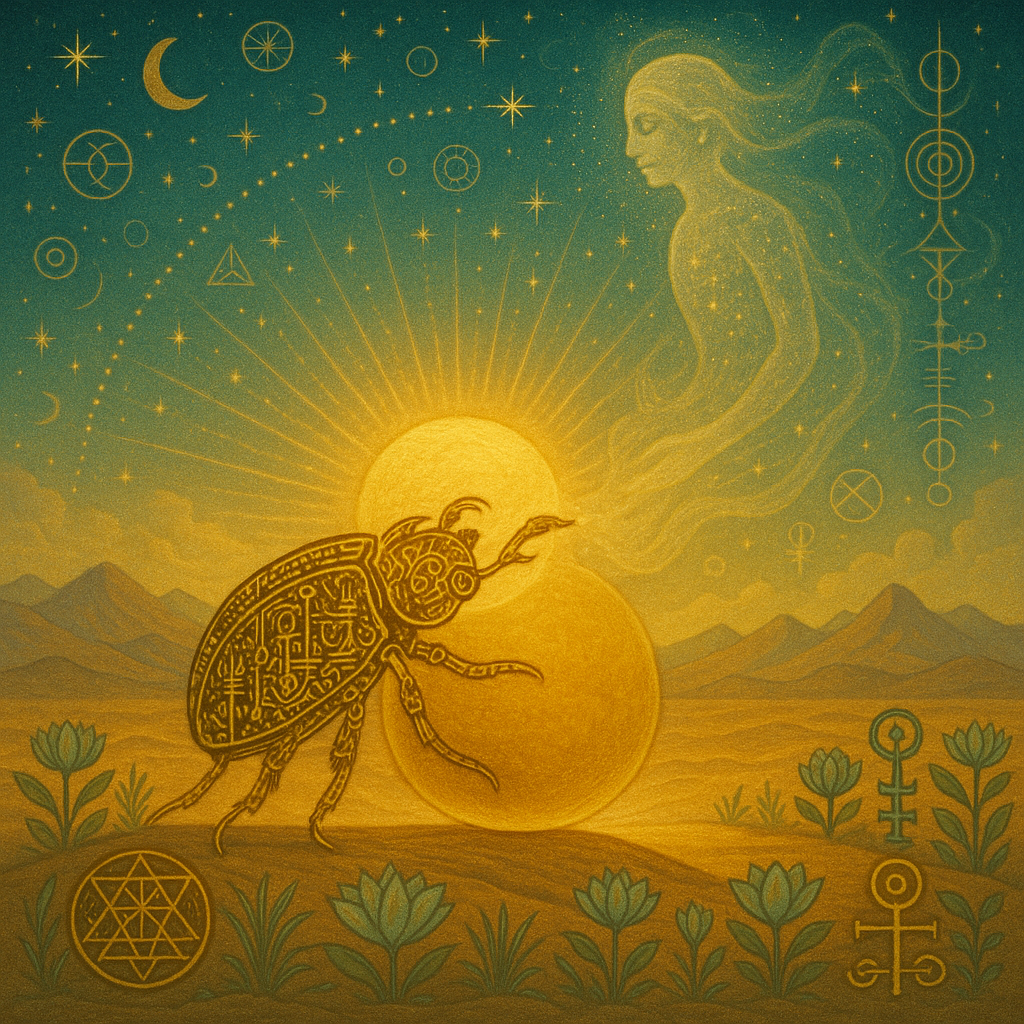
🧠 Scroll I Quiz: Can You Pass the judgement?
1. What was the primary goal of mummification in Ancient Egypt?
Correct! Mummification was a resurrection technology, turning the body into a djet-form for eternal union with the soul.
2. In the Hall of Ma’at, what determined if a soul was devoured by Ammit?
Correct. The judgement was vibrational, the heart was weighed against the feather of Ma’at, not belief.
3. What was the purpose of the 42 Negative Confessions?
Correct. The soul made declarations of truth, not as plea, but as witness of its own inner state.
4. What does it mean to become an “Akh” in Egyptian afterlife tradition?
Correct. The Akh was the final form, luminous, free, divine, and able to dwell among the imperishable stars.
5. Reflective: If your heart were weighed today against the Feather of Ma’at, what would tip the scale?
Insight: Ma’at is not about perfection. It’s about alignment, balance, and the truth you dare to live.
6. What was the symbolic role of the scarab in Egyptian metaphysics?
Correct. The scarab (kheper) symbolised transformation, solar resurrection, and the soul’s continual becoming.
📖 Glossary
- Ma’at
- The cosmic principle of truth, balance, justice, and divine order, personified as a goddess with a feather.
- Ba
- The personality or spirit aspect of the soul, often depicted as a bird with a human head.
- Ka
- The vital life-force or double of a person, sustained by food, offerings, and prayer.
- Akh
- The radiant, immortal soul, the final transfigured state after judgement and initiation.
- Du”st
- The Egyptian underworld, a mysterious realm of trials, gods, serpents, and gates through which the soul journeys after death.
- Ammit
- The Devourer, a composite beast who consumes unworthy souls at the judgement scene.
- Book of the Dead
- A collection of funerary spells and instructions to guide the soul safely through the afterlife.
- Field of Reeds
- The Egyptian paradise, a perfected version of life on Earth, where righteous souls dwell in peace.
🗣️ Reflection Prompt: Could You Face the Scales?
“If your heart were laid bare before the gods, what would it whisper? Would you walk in Ma’at, or be forgotten?”
Offer your reflections or record them in sacred silence:
- What does “living in Ma’at” look like in your daily life?
- Which part of the afterlife journey struck you the most, the gates, the weighing, or the return?
- Do you feel prepared to die consciously, or are you still learning the passwords?
✨ The Scroll Unfolds
Scroll I has led you through the sacred gates of the Egyptian afterlife, the halls of Ma’at, the heart’s judgement, and the radiant destiny of the Akh. In Scroll II, we descend deeper into the Hidden Codes: underworld maps, esoteric resurrection rites, and the soul’s mirror within the tomb.
🔐 Scroll II: The Hidden Codes of the Afterlife Underworld Maps, Resurrection Rituals, and the Soul’s Ciphered Path
⚠️ Egyptian Tradition Disclaimer
This scroll reflects a synthesis of Middle and New Kingdom Egyptian funerary texts, including the Book of the Dead, Pyramid Texts, and Coffin Texts, as well as modern esoteric interpretations. Practices and beliefs evolved over dynasties and priesthoods. What is offered here is a symbolic reconstruction — one sacred current, not the full Nile.
Previously: You entered the Du”st, faced the weighing of your heart, and discovered that the soul is not one thing, but many. Now we descend deeper, through tomb texts, resurrection spells, and ciphered maps of return.
🌀 Chapter 16: Initiation in the Du”st, Why the Hidden World Is Real
“Set khet n kkw, her seba n ba.”
“Make secret the darkness, open the star-way for the soul.”
Temple of Dendera, Star Chamber Inscriptions
Most dismiss the Egyptian Du”st as fantasy, a poetic myth of gods, beasts, and glowing rivers. But the initiate knows: myth is the veil for mechanics.
The Du”st was not a fiction. It was a real realm of consciousness, a dimension of trials and mirrors, shaped by symbolic logic and soul resonance. What you believe becomes your guide. What you forget becomes your trap.
Ancient texts depict the Du”st as a literal underworld traversed by the sun god and the dead. But many modern mystics and esotericists interpret it as a map of consciousness, a symbolic cartography of inner transformation, shadow work, and spiritual passage.
Only the prepared could navigate it. Not by faith, but by knowledge, memory, and vibration. This is why the Egyptians trained from life: practicing names of gates, mapping the 12 hours of night, inscribing the tomb, and rehearsing their own death.
As above, so below. The Du”st mirrors both the night sky and the inner soul. It is an astral code, a psychological terrain, and a sacred machine. You do not walk it with your feet. You walk it with your ba.
“Sekhem ba her Du”st, ren heka an pet.”
“The empowered soul crosses the Du”st, the name of magic opens the heavens.”
Coffin Texts, Spell 142
This chapter begins your initiation, to see the Du”st not as dream, but as the true infrastructure behind all transitions, all rebirths, and all realities. You've been there before. You will go again.
⚡ TL;DR
- The Du”st is not fictional, it is an inner and cosmic realm mapped in symbolic form.
- It mirrors the night sky, the underworld, and the soul’s subconscious terrain.
- Initiates trained for death as a spiritual journey, not an ending.
- The Du”st functions like a symbolic operating system: spells = access codes, names = passwords.
- This chapter begins your descent, through symbols, memory, and gnosis.
⚠️ Interpretive Lens: The framing of the Du”st as a psychological map is a modern esoteric perspective. While ancient Egyptians depicted it as a literal underworld, symbolic readings align with their mythopoetic worldview.
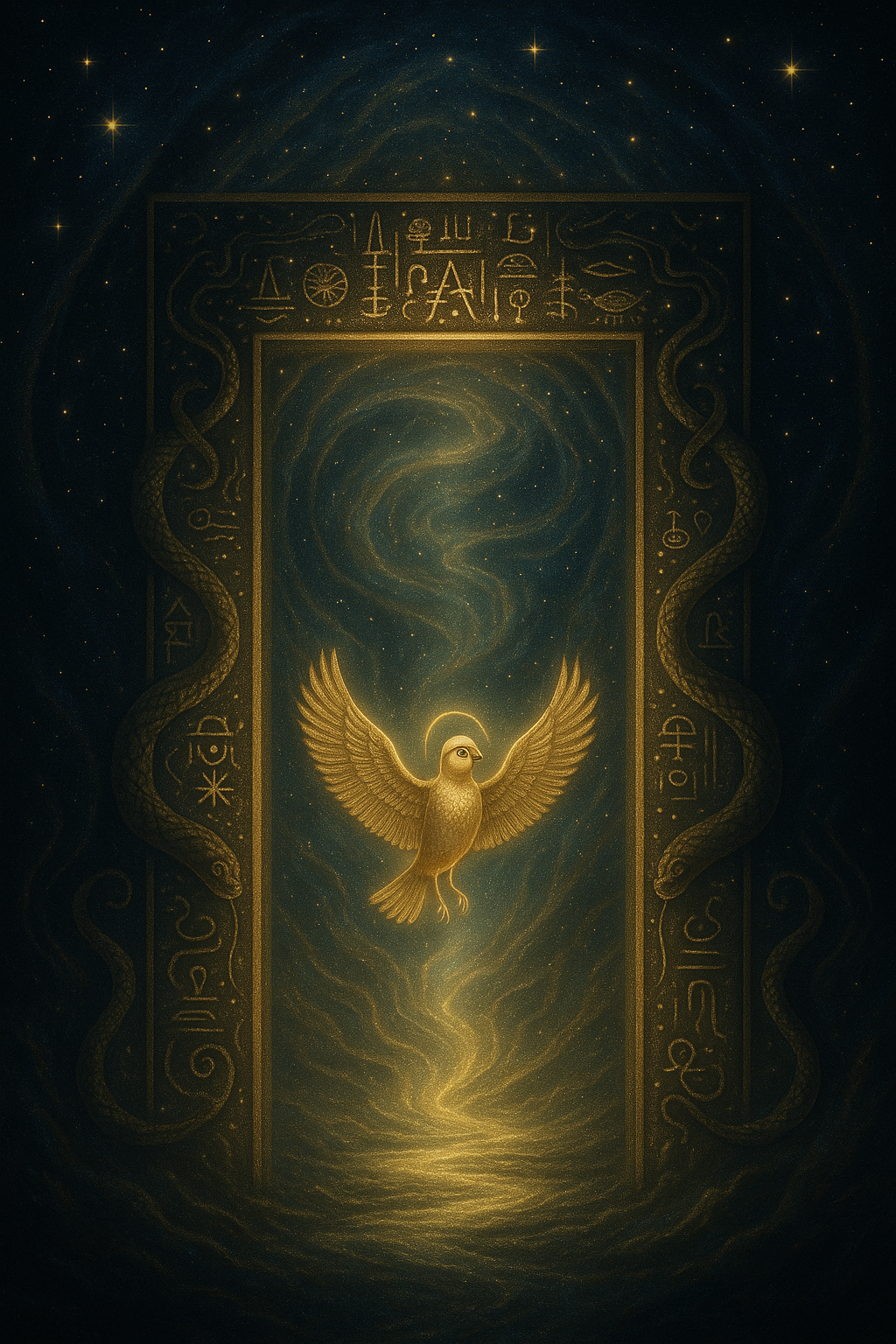
☀️ Chapter 17: 12 Gates, 12 Hours, The Journey of Ra Through the Night
“Ra sekher heru sen em Du”st m sha.”
“Ra sails the hours, passing through Du”st by gates.”
Amduat, 18th Dynasty Tombs
Every night, the sun god Ra entered the underworld, the Du”st, aboard his solar boat. For twelve hours, he passed through twelve gates, twelve realms, twelve trials. And each hour was both temporal and spiritual, a cipher for the soul’s own path through darkness.
In each gate, Ra met serpents, guardians, trials, and allies. His light dimmed, then rekindled. At the sixth hour, he merged with Osiris, death and sun joined. At the twelfth, he rose again, renewed. This was the cycle: descent, stillness, return.
The Amduat (“That Which Is in the Underworld”) and the Book of Gates are not myth, they are ritual cosmologies. They taught priests and initiates to model their own death on Ra’s passage, to navigate the veil through hourly alignments and names of power.
Each gate was guarded by a name, a face, a vibrational key. Without it, the soul wandered. With it, the soul passed freely.
“Ren sekher sha, ankh her kheper.”
“The name opens the hour, life becomes again.”
Book of Gates, Hour 4
The journey of Ra was your journey. It was reenacted in temples, tombs, and the silence of night. It still unfolds within your psyche: 12 inner chambers, each asking: will you remember who you are?
⚡ TL;DR
- Ra journeys through the Du”st each night, passing 12 gates in 12 hours of darkness.
- Each hour represents a spiritual trial and transformation of consciousness.
- The Amduat and Book of Gates were esoteric blueprints for soul navigation after death.
- Initiates memorized names, maps, and spells to pass safely through each realm.
- This journey mirrors both cosmic cycles and the soul’s inner death and rebirth.
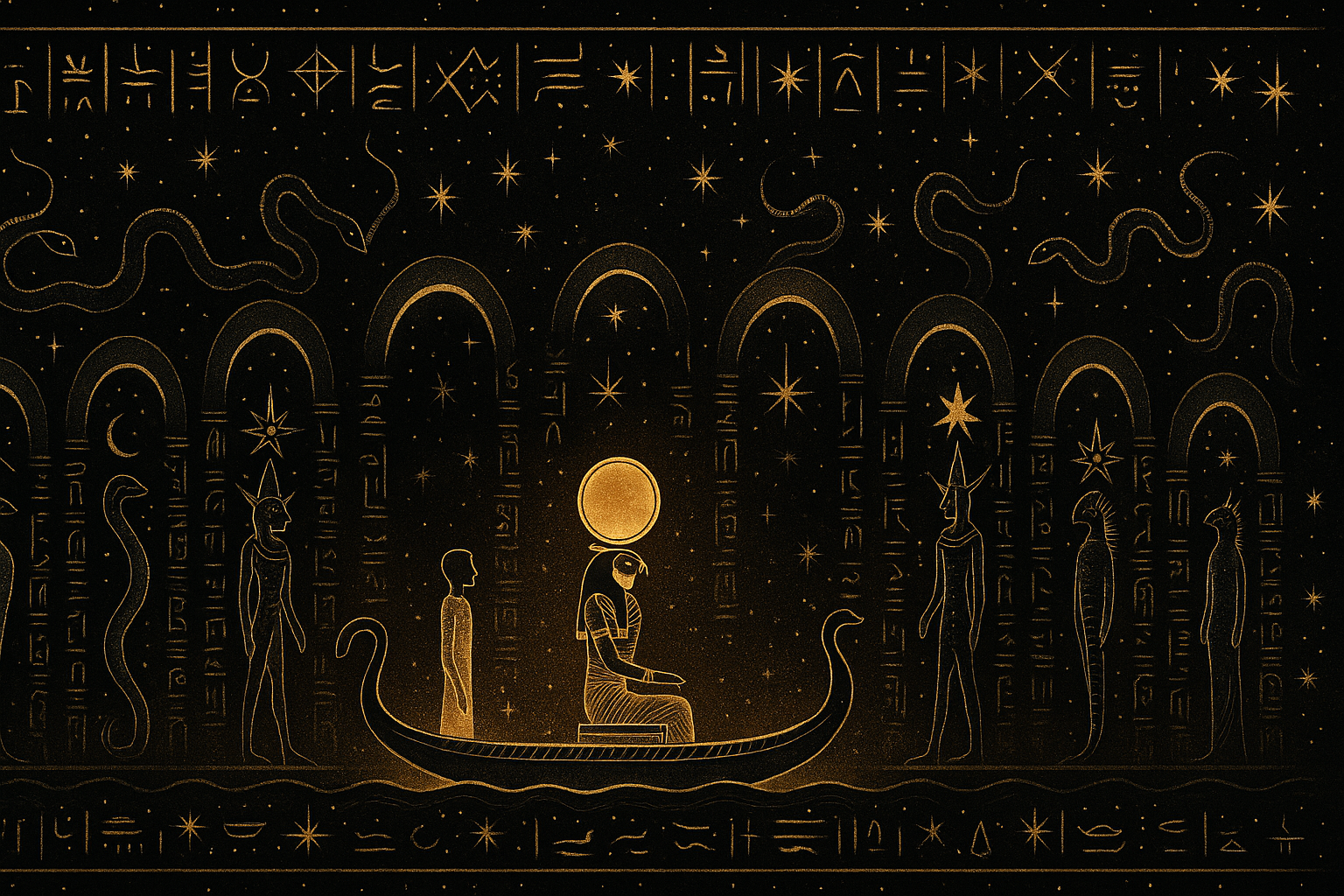
🪬 Chapter 18: Spells of Becoming, Words as Soul-Technology
“Djed medu-netjer, sen ankh n ba.”
“The divine words are spoke, they give life to the soul.”
Book of the Dead, Spell 1
To the ancient Egyptians, words were not symbolic. They were living technologies.
Every hieroglyph was a being. Every spell a vibration. Every utterance, a doorway. The word wasn’t just communication, it was creation. To speak the true name of a thing was to unlock its power. To forget the words was to become lost in the Du”st.
The Book of the Dead is a book of transformation. Not prayers, but activation sequences. Spell 2 helps the soul remember its name. Spell 30 protects the heart from betrayal. Spell 125 grants passage through judgement. These were not for gods, they were for you.
“Kheper djed, kheper ankh.”
“To speak is to becom, to become is to live.”
Pyramid Texts, Utterance 574
Spells were not merely protective charms, they were instruments of heka, the sacred power of utterance that shaped reality. As stated in the Coffin Texts, Spell 142, it is through the magical name that the heavens are opened and the soul is empowered to pass.
The initiate did not simply read the spells. They memorized them. Spoke them. Became them. Each spell was a mirror: when spoken, it reflected the soul’s readiness to pass.
“N djed ib-i m khet-i.”
“Do not speak against my heart in judgement.”
Book of the Dead, Spell 30B
This was not superstition. This was language as light. And the highest spells were those you had written on your heart, words remembered when all else is stripped away.
⚡ TL;DR
- Egyptian “spells” were soul-commands, vibrational technologies for navigating the Du”st.
- Words held creative force; to speak a name or spell was to activate its power.
- The Book of the Dead encoded spells for protection, transformation, and judgement.
- These were not mythic recitations, but metaphysical tools of self-becoming.
- To die well meant to remember, and to speak what only the true soul could say.
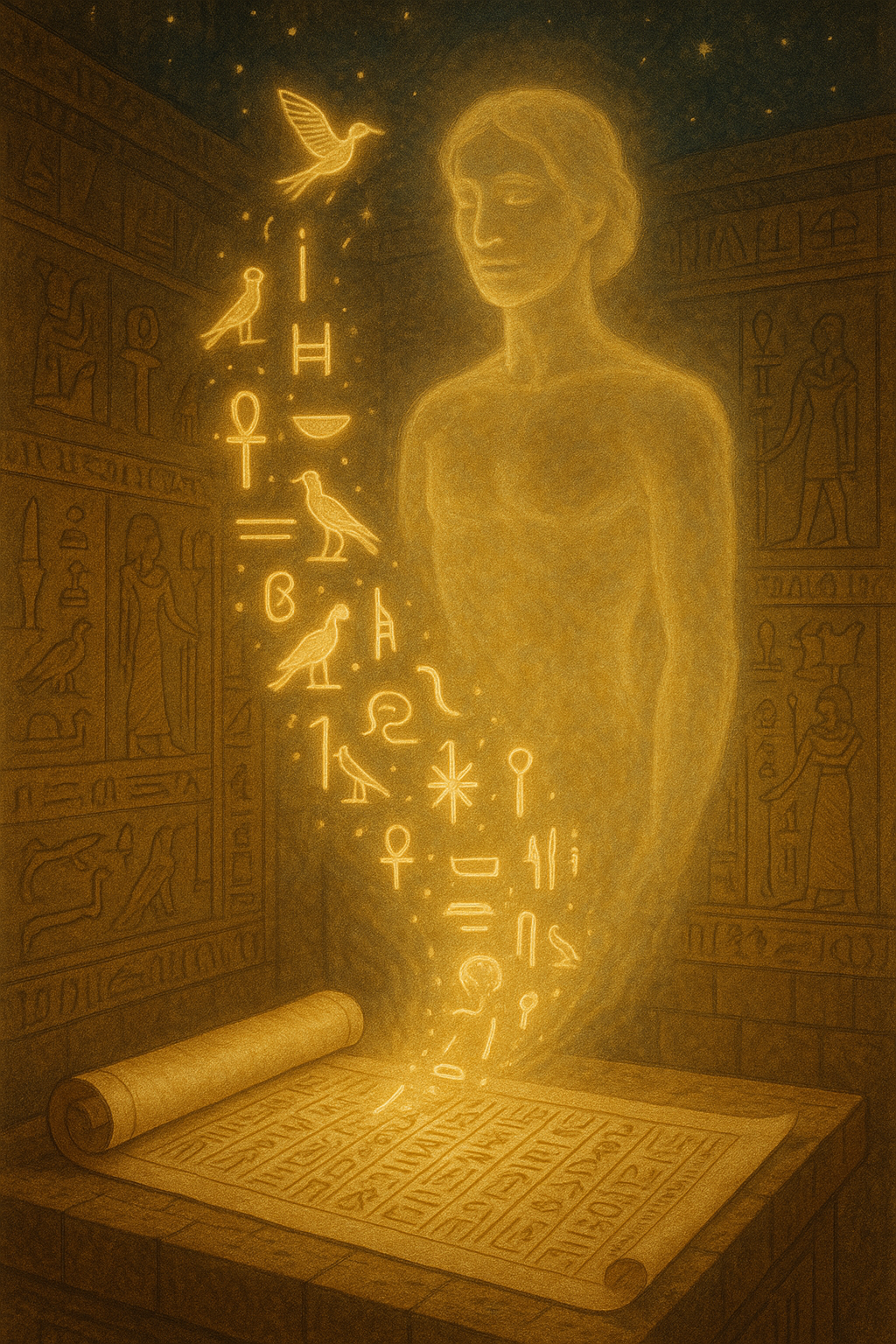
🐍 Chapter 19: Guardians, Serpents & Secret Names
“Ren-a em sekhet, irek-a em Du”st.”
“Know my name in the field, guard your power in the Du”st.”
Book of Gates, Hour 6
Names are keys. And in the Du”st, everything is guarded.
At each gate, the soul meets a guardian, often a deity, a creature, or a serpent. But these are not just monsters or myths. They are threshold intelligences, archetypal forces that test memory, alignment, and vibration.
Some appear terrifying: flame-eyed cobras, jackal-headed gatekeepers, serpent coils ablaze with stars. But each one responds not to strength, but to recognition.
If you speak the name, the true name, they let you pass. If not, you're devoured, turned back, or cast into wandering. The Book of Gates includes dozens of such trials. And each one holds a secret: the guardian is part of you.
“Djed ren ,peshes sha.”
“Speak the name, dissolve the hour.”
Coffin Texts, Spell 1134
To know the name of the gatekeeper is to know your own hidden shadow, the fear, the karmic pattern, the unresolved story. Naming is the act of claiming. Every guardian is a veil. Every serpent a riddle. Every name, a password.
⚡ TL;DR
- The Du”st is filled with guardians and serpents, not to punish, but to test the soul’s memory and power.
- Each gate requires the true name, a word of vibration, truth, or initiation.
- The guardians reflect inner aspects: fears, karma, unspoken truths.
- To speak the name is to pass through, to forget it is to wander.
- The soul that knows the names is not a victim of the underworld, it becomes its master.
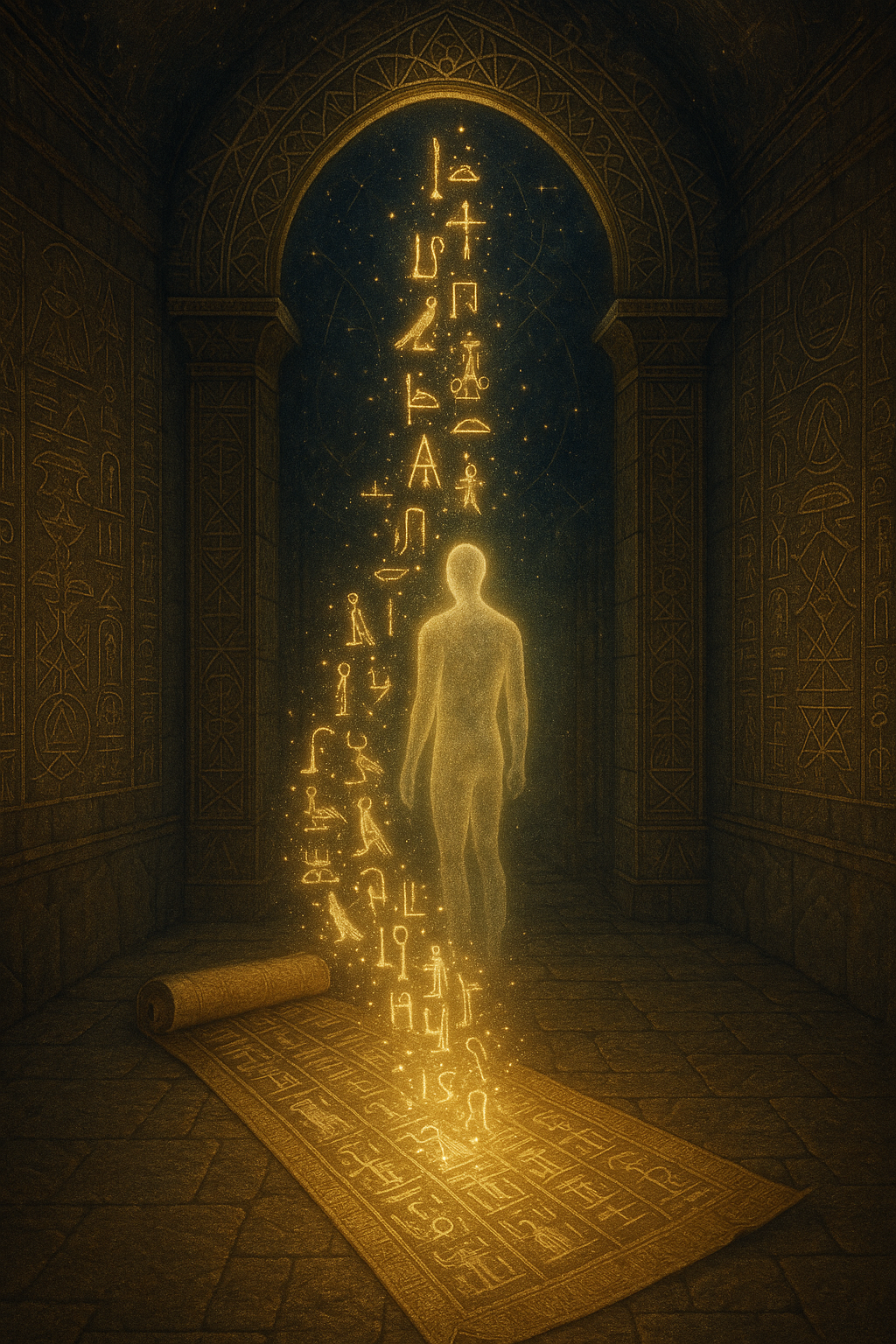
⛵ Chapter 20: The Solar Boat & The Resurrection Engine
“Kheper sekhet em mandjet, ankh heru djet.”
“Becoming sails in the Mandjet, life shines forever.”
Book of the Dead, Spell 15
To cross the Du”st, Ra needed a vessel, a solar barque called the Mandjet. But this was no ordinary ship. It was a resurrection engine, a metaphysical craft powered by sacred geometry, divine names, and the unity of the crew.
The gods on board weren’t just deities, they were functions. Hu (will), Sia (perception), and Heka (magic) rode beside Ra. They weren’t passengers. They were circuitry.
Each night, the boat passed through the 12 hours, facing obstacles, ruptures, and threats. The boat cracked. The crew died. Ra himself was swallowed by the serpent Apophis. And yet, at the final hour, they emerged, reborn, re-lit, re-formed.
This was no myth. This was an initiatory blueprint. The soul, when aligned with will, vision, and magic, becomes unstoppable. And the boat is not just Ra’s. It is yours.
“Iu em seket, kheper her ren.”
“He comes on the boat, becoming through the name.”
Temple of Seti I, Abydos
Some tombs were shaped like boats. Some sarcophagi were sculpted with oars. Why? Because death wasn’t stillness, it was voyage. And the solar barque remains, a symbol of motion, light, and divine structure.
⚡ TL;DR
- The Mandjet (solar boat) is Ra’s nightly vehicle through the Du”st, and a symbol of soul resurrection.
- Its crew represents cosmic forces: will (Hu), perception (Sia), and magic (Heka).
- The journey includes death, battle, and rebirth, a cycle mirrored in every initiate.
- Egyptian tombs and rituals often replicated the solar boat to align the soul with this pattern.
- The boat is not only Ra’s, it is the vehicle of you becoming divine through light.
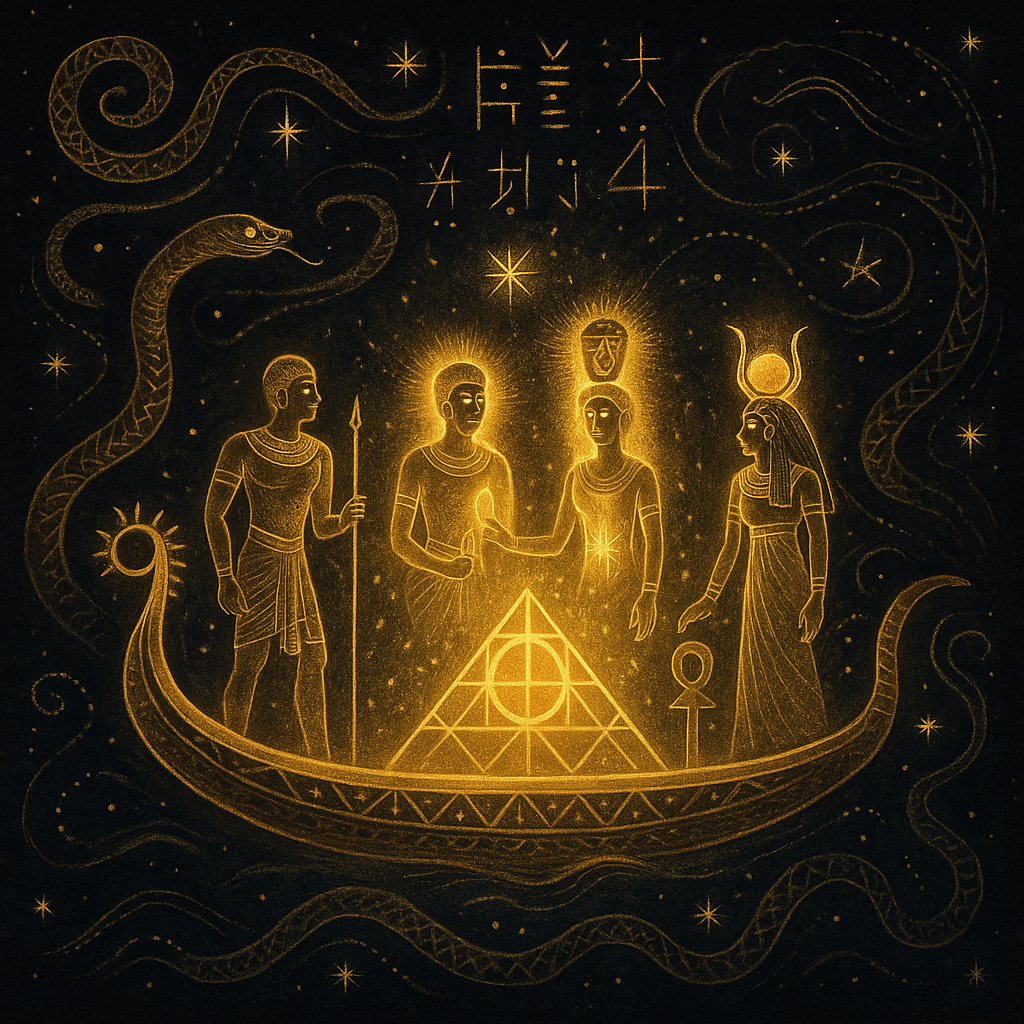
🏛️ Chapter 21: Tomb as Stargate – Architecture of Ascension
“Per-ka em pet, akhet ankh neter.”
“The tomb opens into heaven, the horizon is the life of the god.”
Pyramid Texts, Utterance 263
To the profane, the tomb is a place of rot and silence. To the initiate, the tomb is a machine of transformation.
Every chamber, every carving, every angle was crafted to align with star paths, cosmic gates, and energetic laws. This wasn’t architecture. It was ascension technology.
“Sekhet per-aa em kheperu, renut netjeru.”
“The temple-palace shapes becoming, its rhythms call the gods.”
Temple of Hathor, Dendera
The Great Pyramid wasn’t just a tomb. It was a resonance engine. Its internal shafts align precisely with Orion (Osiris), Sirius (Isis), and the pole stars, opening the way for the soul to rise, navigate, and return as an Akh.
The same is true of the Valley tombs, the solar boats buried beside them, and the “false doors” in every mastaba. These were not ornamental. They were spiritual interfaces, passages through which the Ka could receive offerings, and the Ba could escape.
“Sah-Orion rekhet akhu.”
“Orion knows the souls of the shining ones.”
Pyramid Texts, Utterance 442
We now know what they knew: geometry is language. Frequency is memory. Form is function. And the tomb was not the end, it was the launch site.
⚡ TL;DR
- Egyptian tombs were not just burial sites, they were engineered stargates for soul ascension.
- Every element was aligned with cosmic bodies, sacred geometry, and the spirit’s rebirth.
- The Great Pyramid functioned as a cosmic resonator, guiding the soul to Orion and Sirius.
- False doors, solar boats, and tomb inscriptions served as metaphysical portals and power nodes.
- To build a tomb was to build a soul-vessel, a craft for returning to the stars.
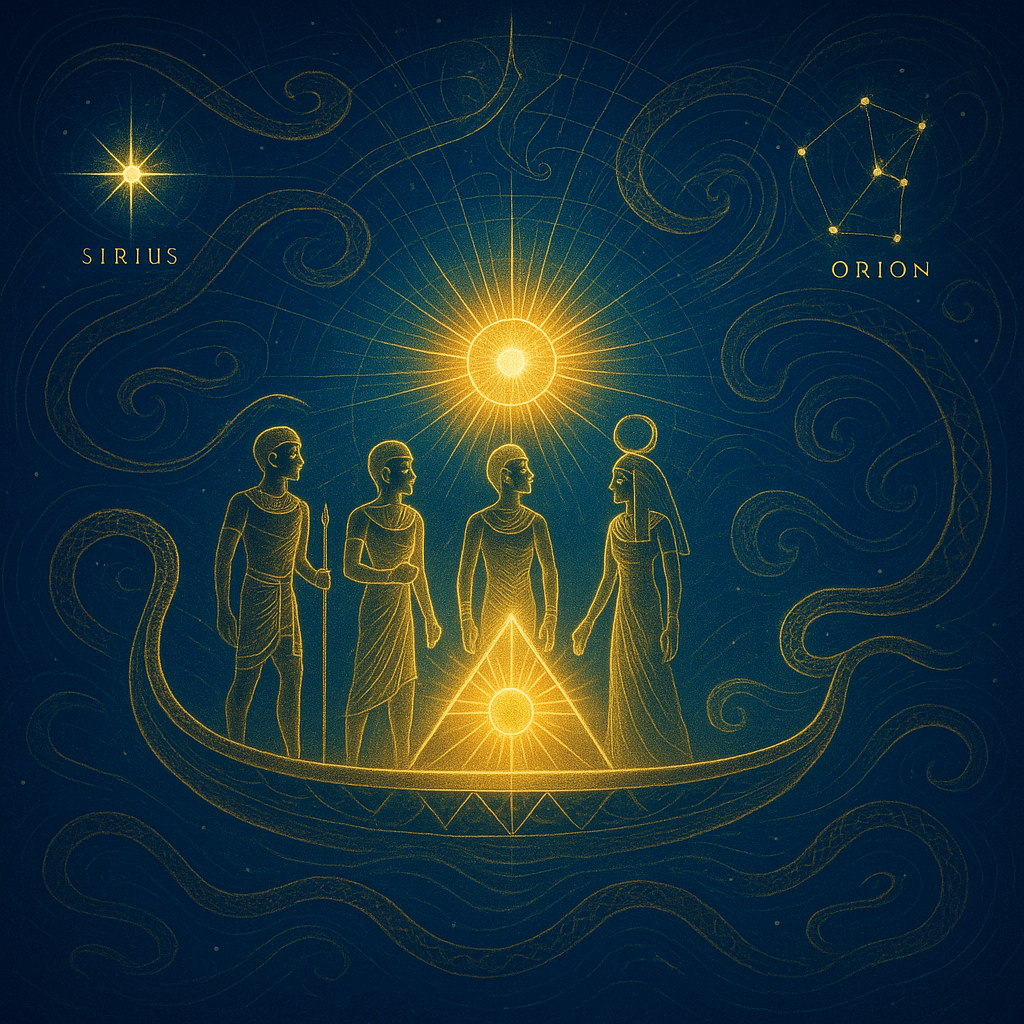
🧠 Chapter 22: Memory Keys, Hieroglyphs, Numbers & the Hidden Body
“Sesh per ren, seka ankh em djed.”
“Write the name, seal life in permanence.”
Temple of Karnak, Northern Wall
The Egyptians were obsessed with memory, not nostalgia, but immortality through encoded form.
Hieroglyphs weren’t just letters. Each one was a living archetype, a vessel for meaning. Carved into tombs, amulets, and scrolls, they preserved the ba’s path, the ka’s vitality, and the ren, the name that grants continued existence.
Numbers, too, held power. The 12 hours of the night. The 42 assessors of Ma’at. The 7 souls of Ra. Every figure echoed metaphysical law, a sacred count mirroring star maps, organs, or cosmic rhythms.
And what about the body? The temples were built to mirror it. So was the Du”st. The head was the sacred east, the feet the realm of death. Veins aligned with Neteru. Bones mapped constellations. You weren’t buried in the tomb. You became the tomb.
“Pet netjer em sekhet ren, djed ba an kheper.”
“The sky of the god is named, the soul is spoken into becoming.”
Coffin Texts, Spell 788
Modern minds lose memory. Ancient minds encoded it, in glyphs, in measurements, in sacred body maps. You can do the same. Memory isn’t just recollection, it’s resurrection.
⚡ TL;DR
- Hieroglyphs were symbolic beings, living keys to preserve the soul’s path.
- Egyptian cosmology encoded power in numbers: 12 hours, 42 judges, 7 souls, etc.
- The tomb and temple mirrored the human body, aligning the microcosm with the macrocosm.
- Names were immortality tools, to lose your name was to vanish forever.
- To encode memory is to encode light, it is the soul’s backup plan.
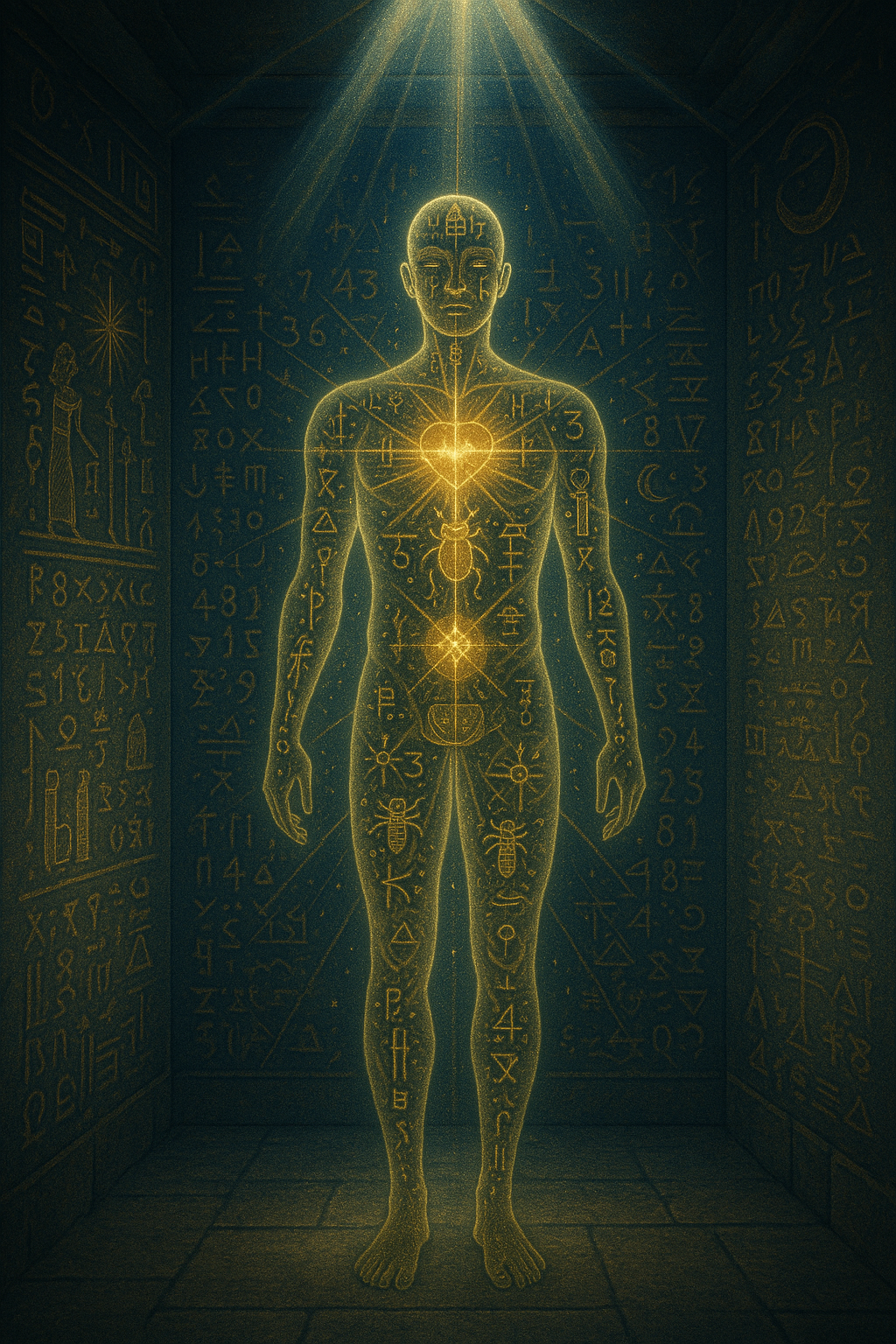
✝️ Chapter 23: Gnostic Parallels, Jesus in the Du”st
“For just as Jonah was three days and three nights in the belly of the great fish, so will the Son of Man be three days and three nights in the heart of the earth.”
Matthew 12:40
In Gnostic streams, Jesus was not a passive sacrifice, he was a navigator of realms. His death was not the end of the story, but the descent into it. The Harrowing of Hell mirrors Ra’s journey through the Du”st, a descent through trials, confrontation, and triumph.
In apocryphal texts like the Gospel of Nicodemus, Christ breaks open the gates of Sheol. He names the demons, frees the righteous dead, and returns transfigured. He does not plead, he commands. He does not fear, he remembers. Just like the soul in the Egyptian Book of the Dead.
Even in canonical scripture, Jesus dies at the ninth hour, descends into the “lower parts of the earth,” and rises on the third day. What is this but a three-part passage through the underworld, echoing Osiris, echoing Ra?
These are not contradictions. They are resonances. The Gnostic Christ was a solar soul, a master of the gates. His body the tomb. His word the spell. His resurrection, the proof.
“I descended into the depths, and the light was with me. The darkness saw me and fled. I shattered the rulers who kept men bound.”
The Gospel of Truth (Nag Hammadi Library)
Jesus in the Du”st is not myth. It is memory. The soul’s pattern, to die consciously, speak truth, and rise beyond the veil.
⚡ TL;DR
- Gnostic texts describe Jesus descending into the underworld, like Ra or Osiris.
- He passes through darkness, names rulers, and liberates souls, a soul technology in action.
- The resurrection is not passive, it is the act of knowing through the veil.
- The Christ is portrayed as a solar being, fearless, luminous, initiating.
- Egyptian and Gnostic maps reflect the same code: know thyself, pass the gates, rise again.
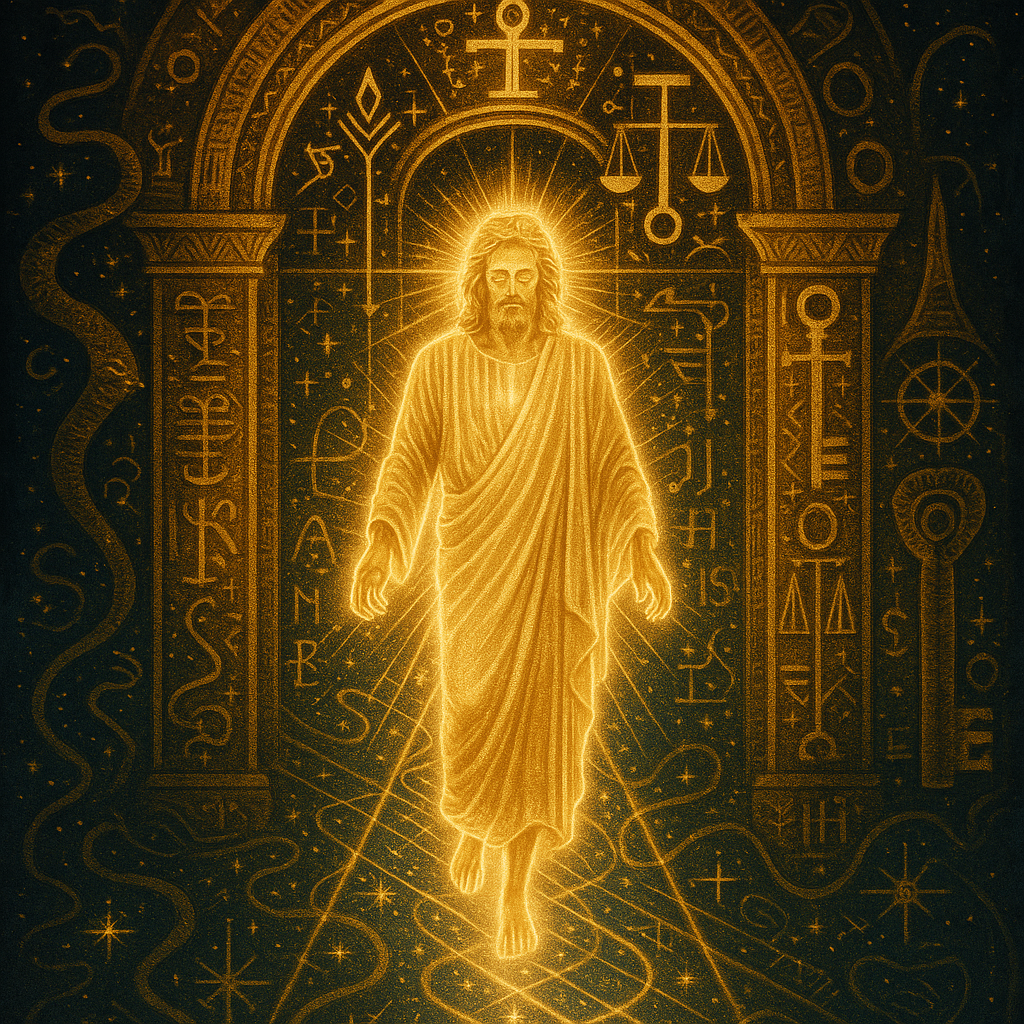
🌀 Chapter 24: Reversing Death, Ritual, Magic & the Return
“Djedu em heka, ankh em kheper.”
“Spoken with magic, life becomes again.”
Book of the Dead, Spell 76
The Egyptians were not content with metaphors. They aimed to reverse death itself.
Every ritual, from the Opening of the Mouth to the final sealing of the tomb, was a reactivation of consciousness. Death was not an end, but a temporary shutdown of functions. The goal: to reboot the soul into eternity.
Spells were coded affirmations. Amulets were charged symbols. Embalming was a sacred reconstruction, aligning organs to gods, body to cosmos, spirit to memory. Every gesture was intentional. Nothing was cosmetic. Everything was metaphysical.
The priest was not a mourner. He was a technician, rebooting the spiritual hardware with chants, oils, geometry, and sound. The goal? To reawaken the Akh, the transfigured self who could cross the heavens as light.
“Tem netjeru em ren-a, kheper ankh djet.”
“All the gods are in my name, I become life everlasting.”
Pyramid Texts, Utterance 571
Reversing death was never about escaping fate. It was about mastering it. To learn the inner mechanics of soul, memory, energy, and return. Not as belief, but as technology of being.
⚡ TL;DR
- Egyptian funerary rituals were aimed at reactivating the soul, not mourning it.
- Magic (heka), words (ren), and ritual acts served as metaphysical technologies of resurrection.
- Death was seen as a transitional state, not finality.
- The Akh, the luminous soul, was the goal: eternal, transfigured, and free.
- To reverse death meant to align with divine structure, inner memory, and cosmic harmony.
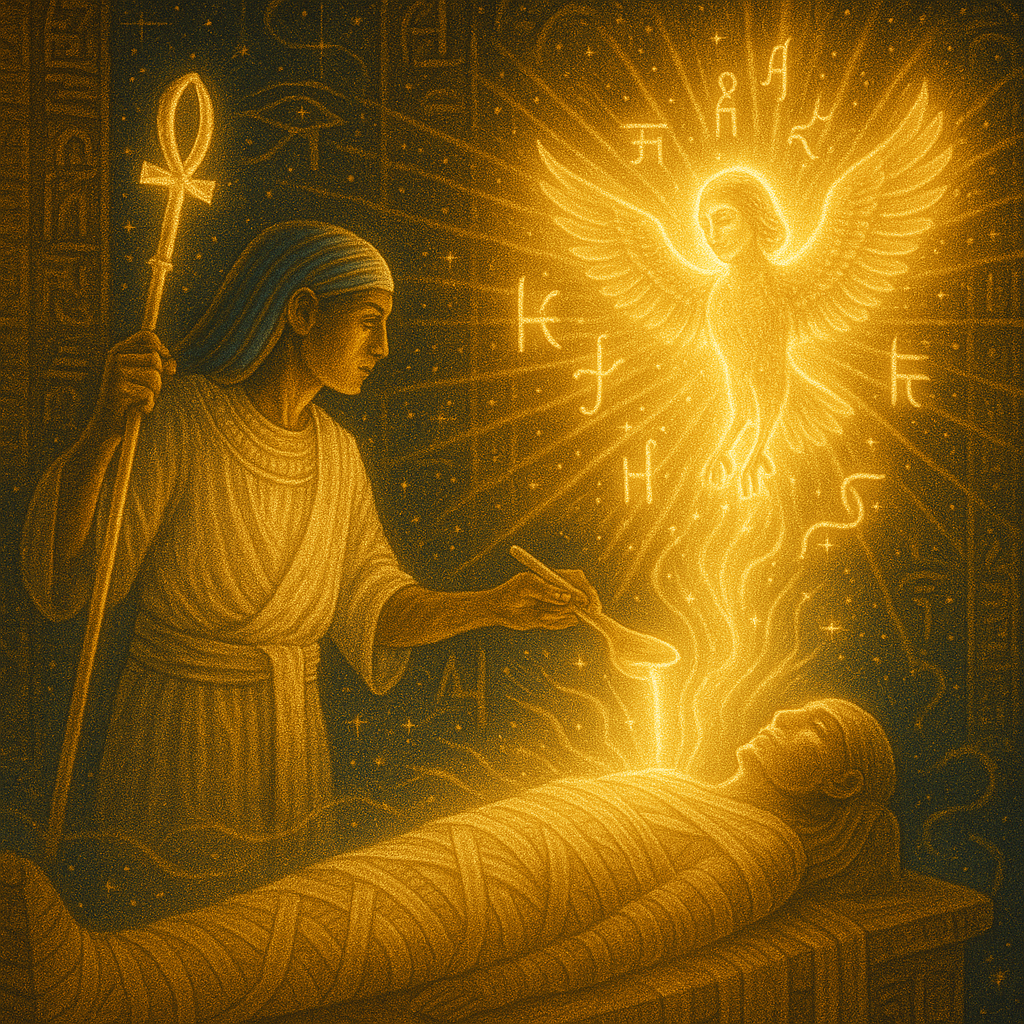
🧬 Chapter 25: Inner Du”st, Mapping the Afterlife Within
“Du”st em ib, ren em kheper.”
“The underworld is within the heart, the name becomes becoming.”
Coffin Texts, Spell 336
In the end, the greatest mystery was this: the Du”st was not out there. It was in here.
Every serpent, gate, and spell, every star and judge, exists within your psychic landscape. The initiates of Egypt didn’t just map the afterlife. They mapped consciousness. The Du”st is a mirror-realm, a cartography of the soul’s shadow and light.
The 12 hours of night reflect 12 inner chambers. The serpent Apophis is your self-doubt. The Feather of Ma’at weighs your choices. The solar boat is your breath, rising and falling. The Akh is your highest self, waiting to emerge.
To walk the Du”st is to walk your memories. To recite the spells is to speak your truth. To name the guardians is to face your fear. There is no passage out until you pass within.
"Neter netjeru em ib-a, djed kheper."
“The god of gods is in my heart, becoming is spoken.”
Temple of Luxor, Inner Sanctum
You are not preparing for a distant realm. You are decoding your inner structure. To master the afterlife is to master the present. Because the gates are always here. The names are always yours. And the light has never left.
⚡ TL;DR
- The Du”st is not just a cosmic geography, it is an inner map of consciousness and memory.
- All Egyptian symbols can be read as psychological archetypes and spiritual states.
- Initiation is the act of walking these gates within, before death.
- Gnosis is the ability to name, navigate, and transform one’s inner underworld.
- You carry the entire map of the afterlife in your own being. The journey is now.
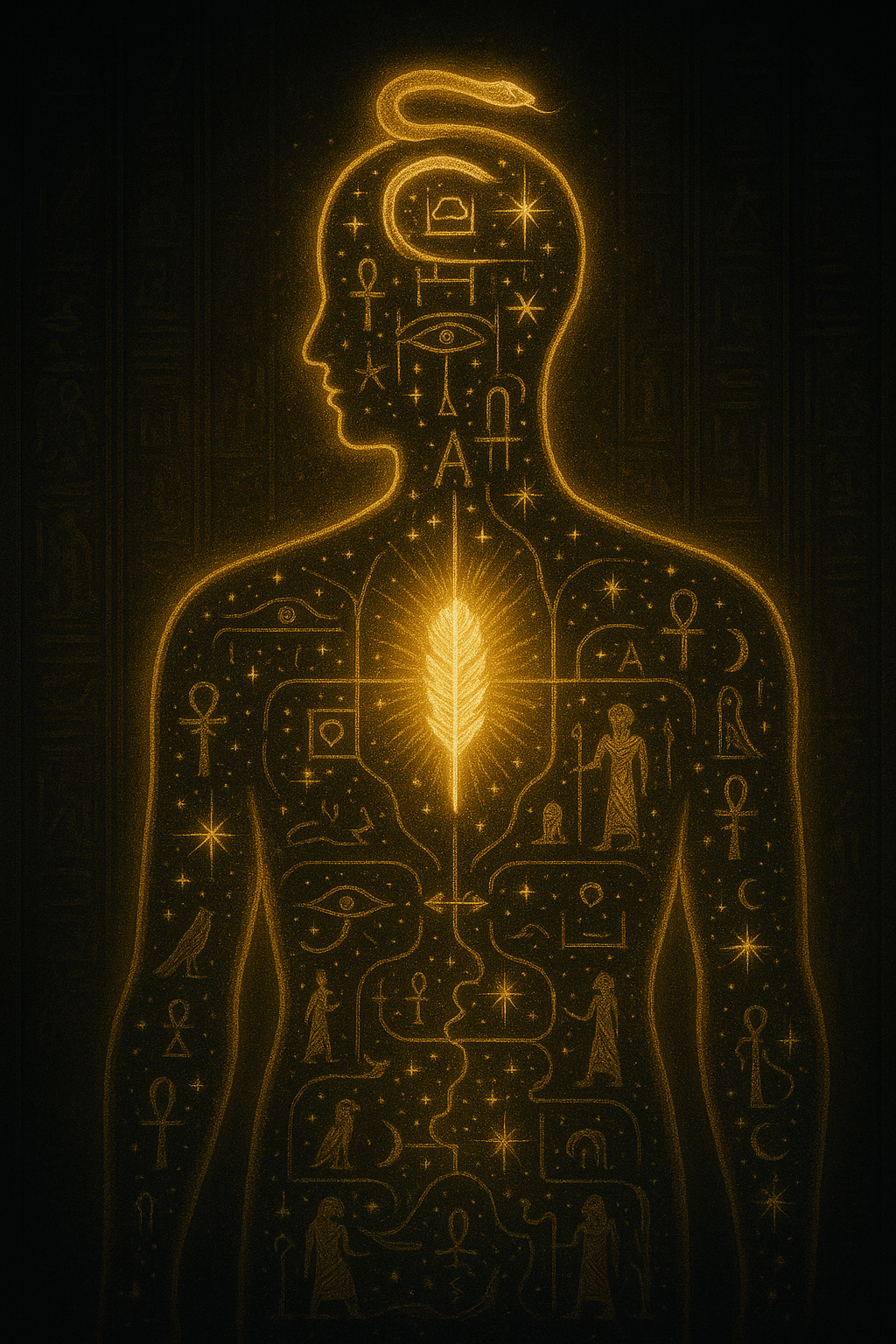
🧠 Scroll II Quiz: Can You Navigate the Gates?
1. What was the purpose of the twelve gates in the journey of Ra through the Du”st?
Correct. Each gate in the Du”st mirrors a trial of consciousness, symbolic steps in the soul’s transformation.
2. What made Egyptian spells more than just “words”?
Correct. Spells were not poetry, they were mechanisms, soul-commands, and passwords to pass through death.
3. What happens when the soul forgets the name of a gatekeeper?
Correct. Forgetfulness is spiritual death. In the Du”st, only remembrance grants passage.
4. Reflective: Which “inner gate” in your life have you recently faced?
Insight: Every life trial is a Du”st gate in disguise, the question is, do you speak the name?
5. What did Egyptian tombs function as, beyond burial spaces?
Correct. Tombs were soul-launch structures, encoded with geometry, memory, and cosmic flight paths.
6. What is the Akh in Egyptian afterlife teachings?
Correct. The Akh is the final becoming, the soul that has passed through the trials and shines like a star.
📖 Glossary
- Du”st
- The Egyptian underworld, not a place of punishment, but a symbolic terrain of gates, trials, and transformation. A realm of the soul’s journey through death and rebirth.
- Mandjet
- Ra’s solar boat, the vessel he sails nightly through the Du”st, symbolizing the cyclical resurrection of the soul and the structure of divine consciousness.
- Heka
- Magical power or life force; the sacred technology through which spells, words, and rituals bring transformation. Considered a divine faculty.
- Ren
- The secret name, a vital part of the soul’s survival. Knowing and speaking the true name gives spiritual power and identity beyond death.
- Gatekeeper
- In Egyptian texts, spiritual guardians of the underworld’s gates who test the soul’s knowledge, memory, and vibration. Often requiring passwords or sacred names to pass.
- Akh
- The transfigured soul, luminous, immortal, and fully realised. The final stage of the soul’s journey, representing a return to divine starlight.
- Amduat
- “That Which Is in the Underworld”, a sacred funerary text mapping the 12-hour journey of Ra through the Du”st, used by pharaohs and initiates alike.
- False Door
- A symbolic portal carved into tombs, believed to allow the Ka (vital essence) to travel between worlds to receive offerings and continue spiritual movement.
- Opening of the Mouth
- A ritual performed on the deceased to reawaken their senses and speech in the afterlife. Symbolically reactivates the soul’s agency beyond death.
- Ba
- The soul’s mobile, personality-bearing aspect, often depicted as a bird. It travels freely through realms, returning to the body if properly preserved.
🗣️ Discussion: What Gate Are You At?
The Du”at was never just a myth - it”s a mirror. Every soul stands before a gate. Every gate asks a question.
- What threshold are you currently facing - grief, identity, truth, or rebirth?
- Have you ever felt the presence of a “guardian,” a test that required your inner name?
- Which part of you still fears the descent, and which part remembers the path?
Reflect privately or share your gate using #TheGnosticKey:
✨ The Scroll Unfolds
Scroll II revealed the hidden engines of resurrection: gates, names, spells, and sacred design. In Scroll III, we reach the final ascent, where the soul becomes radiant, judgement meets memory, and the Akh takes flight as starlight.
💎 Scroll III: The Akh and the Starfire Soul Resurrection, Divine Memory, and the Name That Cannot Die
⚠️ Egyptian Tradition Disclaimer
This scroll offers a symbolic reconstruction based on ancient Egyptian resurrection texts — including the Amduat, Book of Gates, and late-period interpretations of the Book of the Dead. While informed by historical sources, it does not claim to present a fixed doctrine. The path of the Akh was reimagined across dynasties, cult centres, and mystery rites. What is shared here is a spiritual synthesis — a mythic current, not an academic consensus.
Previously: You deciphered the maps of the afterlife, spells of becoming, trials of identity, and the ciphered rites of return. But resurrection is not mere passage. Now comes the test of transfiguration, when Ka, Ba, and Ren ignite as one: the Akh, radiant and eternal.
🌾 Chapter 26: The Field of Reeds, The Mirror of the Soul’s Becoming
“Sekhet-Aaru em ren-a, neferu n ankh.”
“The Field of Reeds in my name, the beauty of eternal life.”
Book of the Dead, Spell 110
After the gates. After the trials. If the soul passes, it enters a place called Sekhet-Aaru, the Field of Reeds. But this is not heaven as reward. It is mirror and harvest.
Sekhet-Aaru appears lush and abundant, an ideal version of Egypt’s fertile lands. There are canals, birdsong, loved ones, and endless fields to cultivate. But these fields are not just crops, they are the soul’s own actions made visible. Your deeds, thoughts, and truths, returned as an environment you must walk.
If you lived in harmony with Ma’at, your field is green and fruitful. If not, it is barren, tangled, strange. This is not judgement by an external god. This is yourself revealed in form.
This is why the Field is not a gift. It is a mirror of coherence. You don’t arrive here through belief, but through frequency. The landscape remembers what you forgot.
“Iu em sekhet, djed netjer nefer.”
“He comes into the field, the god says it is good.”
Pyramid Texts, Utterance 587
Sekhet-Aaru is the world built from your frequency. Not a dream. A result. And in it, you are given time, to learn, to work, to merge with light. It is not the end of the journey. It is the soul in reflection, before final ascent.
Just like the Gnostic aeons form inner worlds, so too does Sekhet-Aaru: a visible reflection of your hidden order. It is the first heaven, not the last.
⚡ TL;DR
- Sekhet-Aaru (Field of Reeds) is the Egyptian “paradise,” but not as reward, it is the reflection of your own actions.
- The soul lives in a self-generated landscape based on alignment with Ma’at.
- It is fertile or barren, beautiful or distorted, depending on the life you lived.
- This realm is not permanent, it is preparatory, contemplative, and transformational.
- The Field of Reeds is the mirror world before the final transfiguration into Akh.
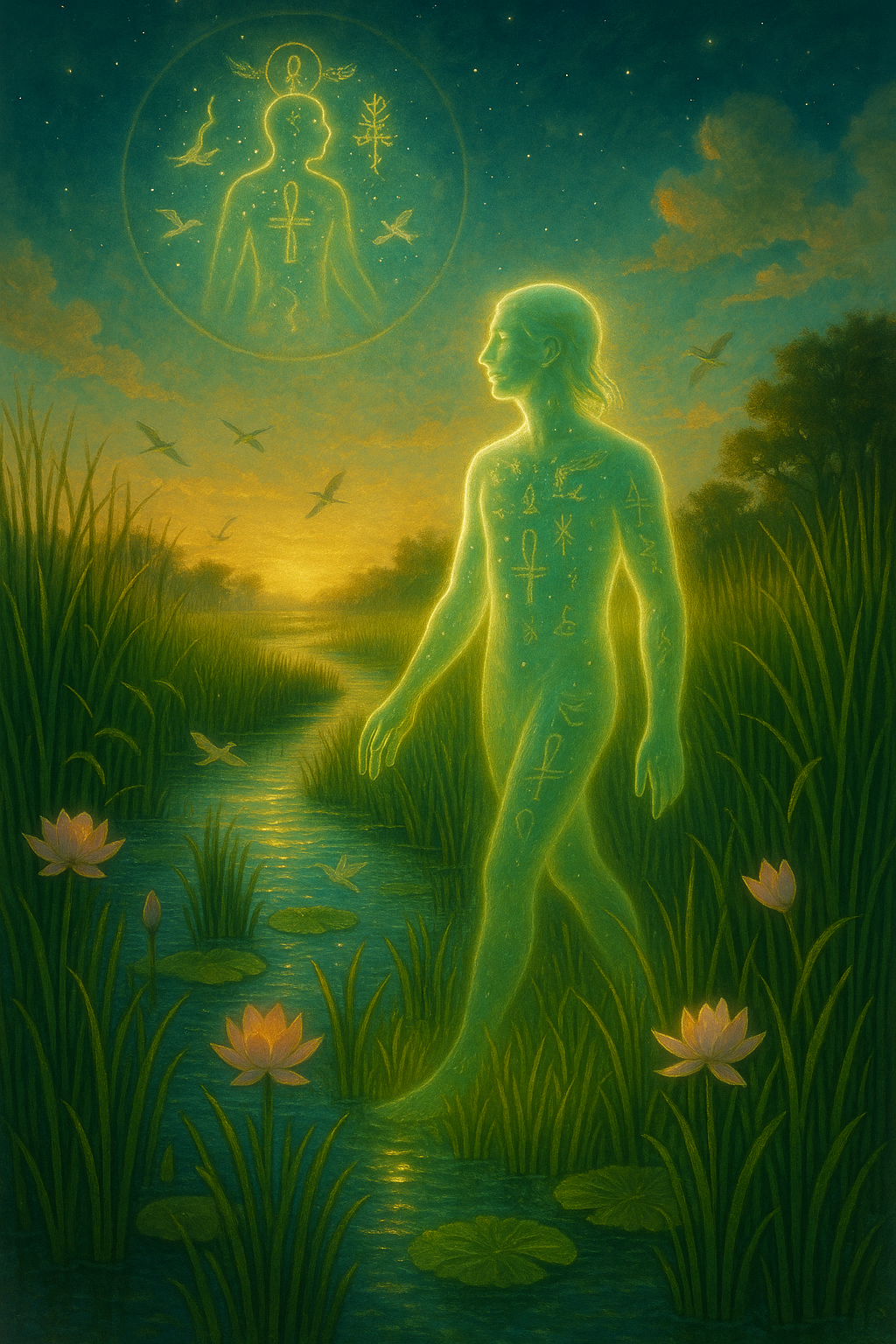
⚖️ Chapter 27: The Weighing of the Heart, Justice Beyond Illusion
“Ib-a em Ma’at, djedu em ankh.”
“My heart is in truth, my words are life.”
Book of the Dead, Spell 30B
Every soul, no matter how radiant, must pass through the Hall of Two Truths. Here, the heart, seat of memory and motive, is placed on a scale. On the other side rests a single feather: the emblem of Ma’at, cosmic truth.
There is no advocate here. No priest. Only the heart and the weightless feather. This is soul science, not divine whim.
This is not a test by doctrine. It is a vibrational measure. The heart must be light, unburdened by deception, greed, or distortion. Not sin in the modern sense, but imbalance. The scales do not lie.
The god Thoth records the verdict. Anubis tends the scale. And if the heart weighs heavier than truth? It is thrown to Ammit, the devourer, and the soul ceases to be.
Egyptologist Jan Assmann describes this not as eternal punishment, but as cosmic annihilation, the soul is unmade, erased from memory, unfit for further becoming.
"Ankh ib em Ma’at, sa netjer em kheper."
“The heart lives in Ma’at, the god becomes through it.”
Temple of Horus, Edfu
This is not cruelty. It is equilibrium enforcement. The soul must resonate with truth to proceed. And if it does, it moves on to become Akh: transfigured, luminous, eternal. But first, the scale must speak.
Gnostics speak of Archons, threshold beings who test the soul’s purity. This is the Egyptian mirror of that gate: not fear, but resonant alignment.
“Khet n ib djed Maat.”
“The deed of the heart is weighed by Ma’at.”
Book of the Dead, Spell 125
Just like the Gnostic aeons form inner worlds, so too does Sekhet-Aaru: a visible reflection of your hidden order. It is the first heaven, not the last.
⚡ TL;DR
- The Weighing of the Heart is a metaphysical judgement, a test of truth, not belief.
- The heart is weighed against the Feather of Ma’at, symbol of universal harmony.
- If the heart is too heavy, the soul is unmade, erased from cosmic memory (see Assmann, 2005).
- This is not divine punishment, but vibrational coherence, only alignment proceeds.
- The process is archetypal, it appears in dreams, initiations, and inner trials.

🗣️ Chapter 28: 42 Judges, 42 Confessions, The Trial of Memory
“N djed khef, n djed netjer.”
“No lies have I spoken, no god have I deceived.”
Book of the Dead, Negative Confession
After the weighing, the soul enters a more intimate court: 42 Neteru, divine aspects of Ma’at, each representing a principle of truth. One by one, they listen as the soul speaks its memory.
This is the Negative Confession. Not a plea for forgiveness, but a statement of alignment. “I have not stolen.” “I have not polluted the waters.” “I have not caused needless pain.”
Each confession is a vibrational check, does your soul resonate with what you speak? If you lie, the echo distorts. If you speak truth, the gate opens.
These 42 principles are not moral laws. They are keys to soul coherence. They test the harmony between thought, word, and deed.
“Djed ib-a em djed ren-a, kheper netjeru em ankh.”
“My heart speaks in my name, the gods become in life.”
Temple of Thoth, Hermopolis
The trial is not external. The judges are not separate. Each one is a facet of your soul, asking: Were you honest with me? Did you remember what we came here for?
⚡ TL;DR
- After the heart is weighed, the soul gives 42 “Negative Confessions”, declarations of moral-spiritual alignment.
- Each statement is directed to a different Neter (divine force), testing one facet of Ma’at.
- These are not pleas for mercy, they are affirmations of memory, integrity, and coherence.
- The 42 Judges mirror the soul, amplifying truth or distortion.
- This is soul science: alignment determines passage.
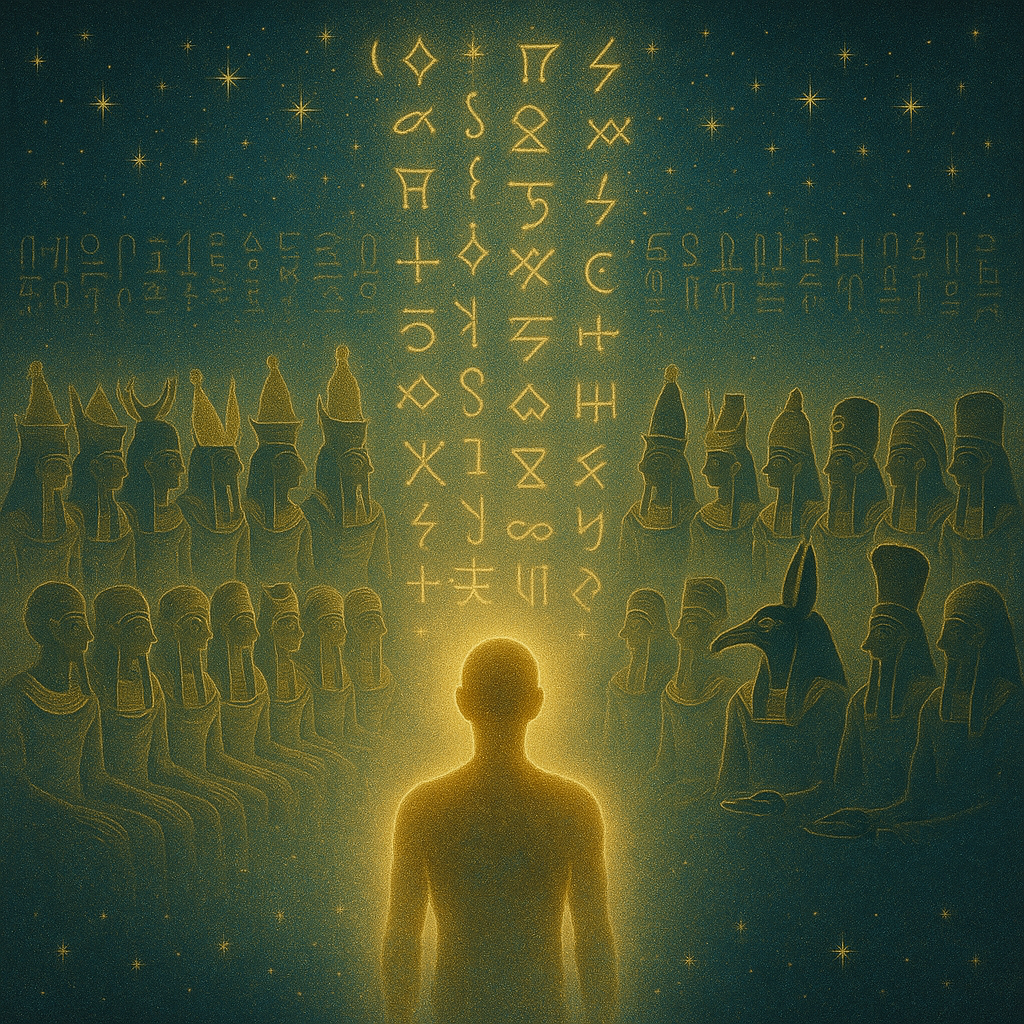
🪶 Chapter 29: The Feather of Ma’at, Balancing Truth and Self
“Ma’at em ren, ankh em djed.”
“Truth in name, life in word.”
Papyrus of Ani, Plate 8
The Feather is not light because it lacks weight. It is light because it has no distortion. In the trial of the soul, the Feather of Ma’at is not just a cosmic measure, it is what you become.
Ma’at is not a goddess to be worshipped. She is a frequency to be matched. Truth, harmony, right order, these are not commandments, but states of being. The Feather is the standard. Your heart must resonate with it.
To live Ma’at is to be transparent in soul. No manipulation. No inner division. Your thought, word, and deed aligned like a beam of sunlight. In this state, you are not weighed, you are weightless.
"Neb Ma’at em ib-a, djed kheperu ankh."
“The Lord of Ma’at is in my heart, becoming speaks life.”
Temple of Karnak, East Wall
This is not about being perfect. It’s about being integral. Unified. Whole. The Feather doesn’t test morality, it tests resonance. And if you match it, the path opens. Because you are already flying.
⚡ TL;DR
- The Feather of Ma’at is the vibrational standard, light, pure, undistorted.
- To “pass” is to live in integrity, thought, word, and deed aligned.
- Ma’at is not belief, it is resonance with truth and harmony.
- The Feather is the mirror of your essence. The lighter you are, the further you go.
- When the soul becomes Ma’at, it needs no wings. It is the flight itself.
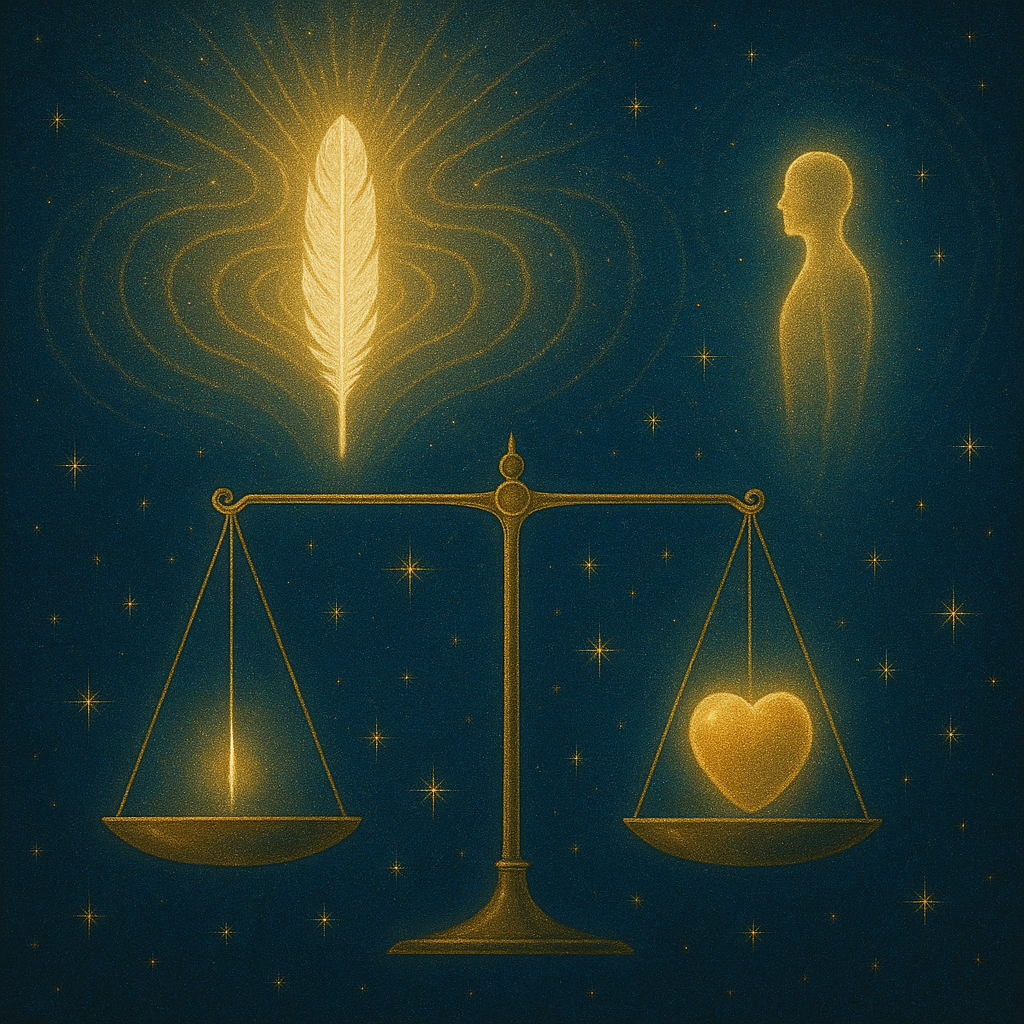
🐊 Chapter 30: The Devourer, What Happens When You Fail
“Ammit em djed, kheperu sesh.”
“Devourer in speech, the forms are erased.”
Papyrus of Hunefer
She waits beside the scale, part crocodile, part lion, part hippopotamus. She is Ammit, “She Who Swallows the Dead.”
But this is not damnation. This is erasure. A soul whose heart is too heavy, too false, too fragmented, is not punished. It is unwritten. It becomes food for Ammit, not in cruelty, but in unfitness for further becoming.
To be devoured is to fail the resonance test. The heart cannot ascend. The body is preserved, the name forgotten. You do not burn. You simply vanish, like a dream that forgets itself.
Ammit is not evil. She is equilibrium. The final safeguard. The memory cleanser of the cosmos. The one who ensures that only coherent light continues.
“N djed kheper, ammit em ankh.”
“No becoming is spoken, devouring is the only life.”
Coffin Texts, Spell 157
This is not to scare you. It is to clarify the stakes. The soul is not saved by mercy, it is sustained by memory, alignment, and truth. Only what is true can endure. The rest is unmade.
⚡ TL;DR
- Ammit is the devourer of unworthy souls, not out of malice, but function.
- If a soul’s heart is heavier than Ma’at, it is erased, forgotten by the cosmic memory.
- This is not eternal torment, it is annihilation through dissonance.
- Egyptian judgement is based on coherence, not religion or sin.
- Only the soul that aligns may ascend. The rest dissolve like forgotten dreams.
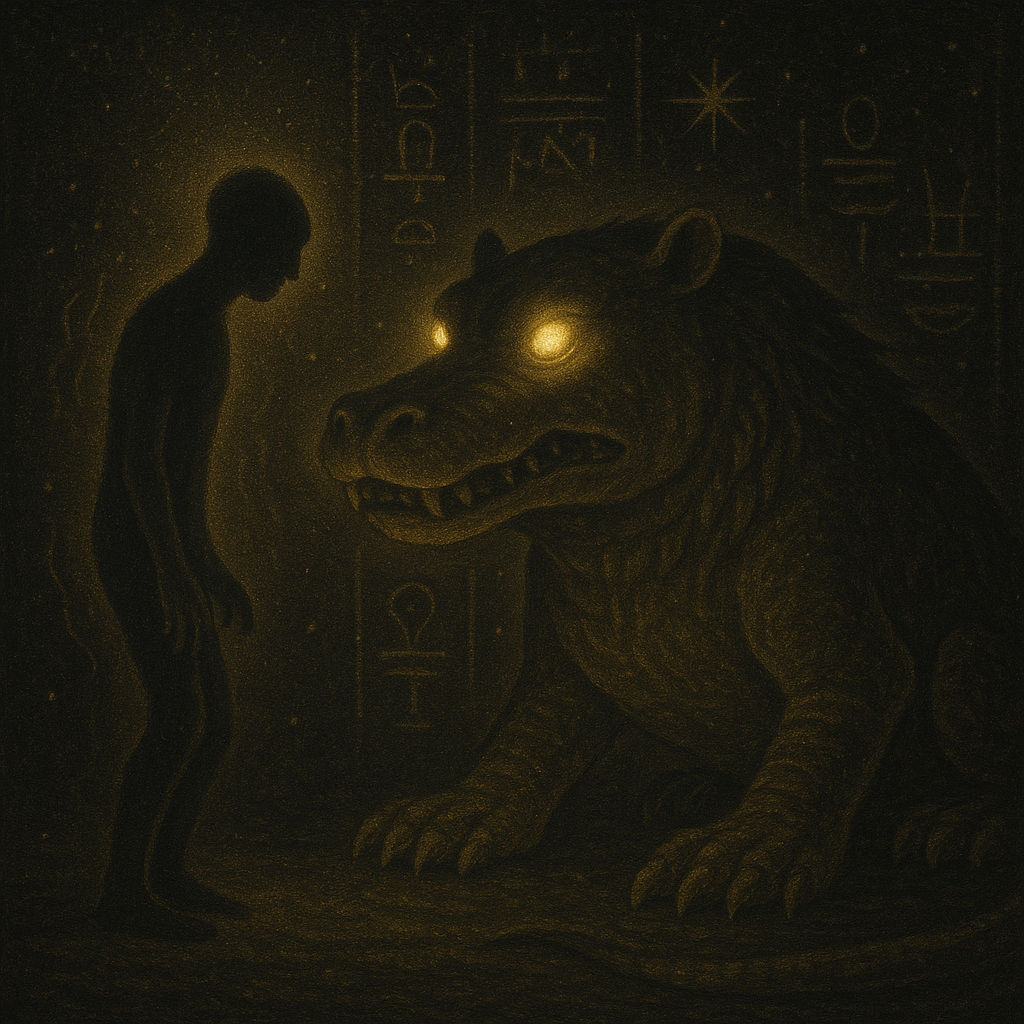
🌟 Chapter 31: Becoming the Akh, The Soul Transfigured
“Akh em djed, kheperu em sekhem.”
“Akh in word, becoming in power.”
Pyramid Texts, Utterance 422
The trials are passed. The heart is light. The soul remembers. And now, it transfigures.
The Akh is not simply a phase of the soul, it is a state of becoming. A fusion of memory, name, truth, and radiance. The Ba and Ka rejoin. The name shines in the scrolls. The soul becomes starfire.
To become Akh is to become immortal, radiant, effective. Not just to survive death, but to master it. You rise not as shadow or echo, but as a being of light, who may dwell with the gods, or guide others.
The Akh can appear. The Akh can bless. The Akh can shape history, dreams, and lives. It is the eternal self, conscious, coherent, and cosmic.
“Djed ren-a em akhet, kheper netjer em khetem.”
“My name is spoken in the horizon, I become a god in the seal.”
Temple of Luxor, Akh Chapel
Gnostic echoes call this the divine spark. Egyptian wisdom calls it the Akh. But both agree: You are not your body. You are the fire that remembers.
⚡ TL;DR
- The Akh is the final form of the soul, luminous, eternal, divinely effective.
- It arises when the soul passes all trials with coherence and memory intact.
- The Akh is immortal, able to dwell among the gods or act in the world.
- This is not metaphor, it is soul-technology. Gnosis through becoming.
- To become Akh is to awaken as light, no longer bound by illusion, fear, or time.
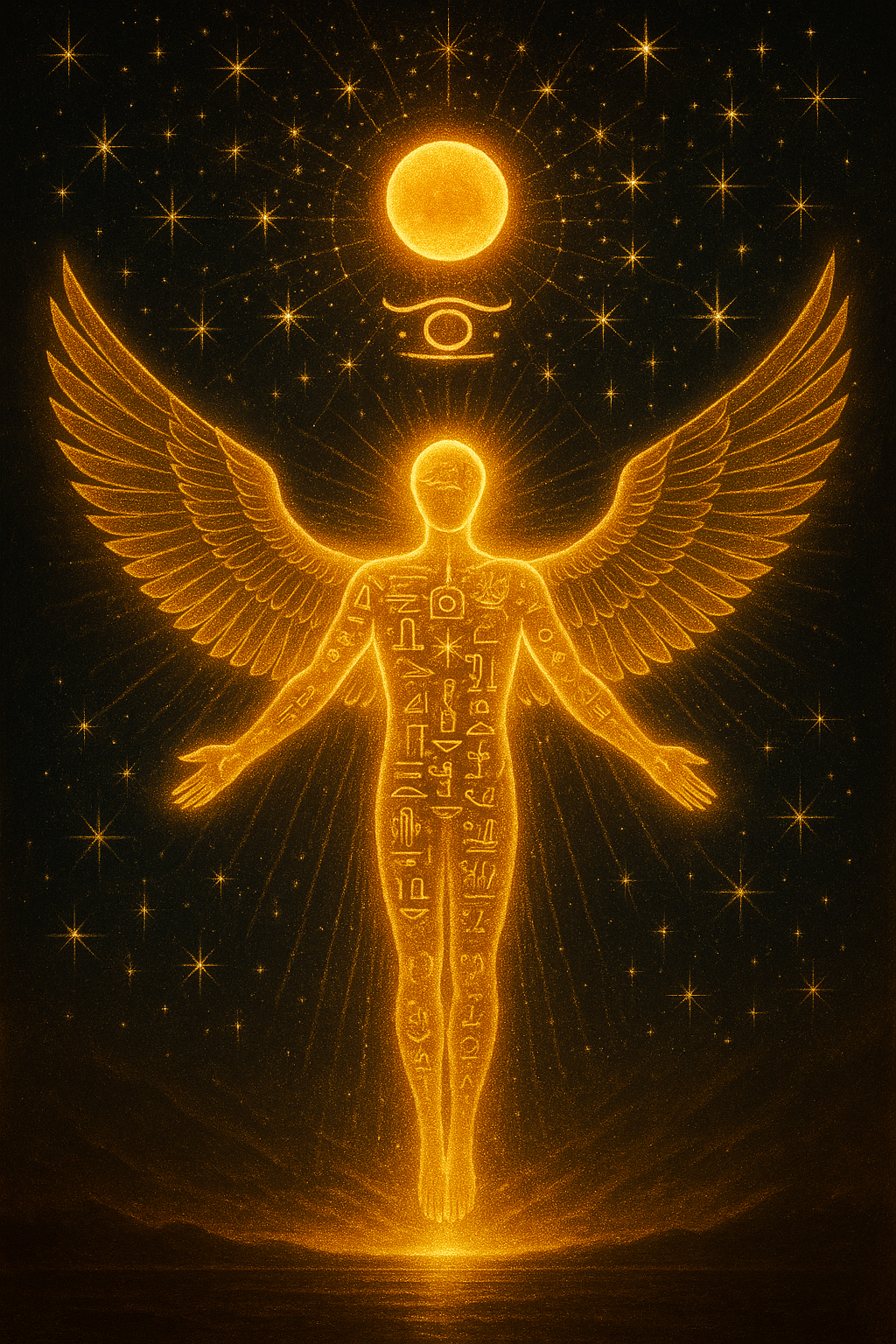
🌌 Chapter 32: The Star Map, Returning to the Constellations
“Sopdet em kheperu, ren em pet.”
“Sirius becomes in becoming, the name is in the sky.”
Pyramid Texts, Utterance 302
Every Akh needs a destination. For the Egyptians, it was not vague paradise, it was the stars.
The ancients mapped specific constellations as destinations for the awakened soul. Sirius (Sopdet), Orion (Sah), and the circumpolar stars, known as the Imperishables, were cited again and again in funerary texts as the places where the Akh shall dwell.
In Pyramid Texts, Utterance 882, the soul declares: “May you ascend to the sky among the stars… may you sit among the Imperishables and never die again.”
Why the stars? Because they are fixed, eternal, luminous. They are memory in the heavens. And to rise among them is to be remembered, to continue as light.
The tombs were aligned. The pyramids encoded their angles. Every symbol, every spell, every shaft, a cosmic GPS for the Akh.
“Akhu em pet, kheperu em sesh.”
“The shining ones in the sky, becoming through writing.”
Temple of Dendera, Star Chamber
This was not primitive belief. It was resonant architecture. A soul that remembered its name, passed its trial, and transfigured into Akh, could then rejoin the Source through the stars.
⚡ TL;DR
- The Akh does not wander, it ascends to mapped constellations, especially Sirius and Orion.
- Pyramid Texts explicitly describe this stellar destination (e.g. Utterance 882).
- These stars represent eternal, radiant consciousness, the divine “sky-beings.”
- Egyptian architecture and texts encoded stellar coordinates for the soul.
- This was a return to cosmic Source, not escape. The stars are not destination only, they are your origin.
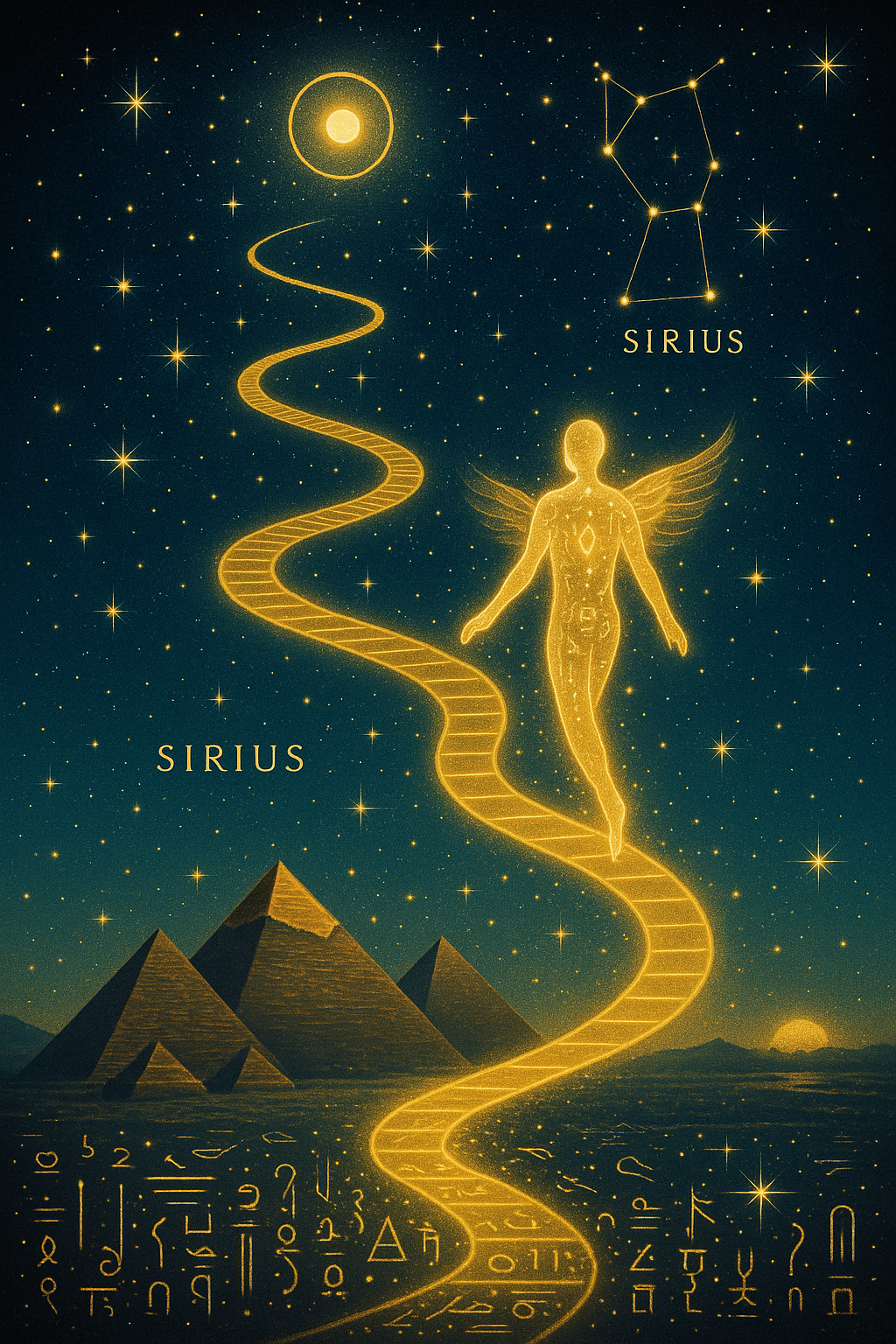
🔥 Chapter 33: The Role of the Ka, Fuel, Offering, Flame
“Ka em ankh, sekhem em djed.”
“Ka is life, power in speech.”
Pyramid Texts, Utterance 215
In Egyptian soul anatomy, the Ka is the double, the vital essence, the energetic body. Unlike the Ba, which moves, or the Akh, which ascends, the Ka is the fire within. It is the soul’s flame.
The Ka must be nourished. This is why offerings were made, bread, wine, incense. Not to appease, but to feed. The Ka feeds on energy, memory, and presence. A starved Ka dims the whole being. A strong Ka fuels the resurrection engine.
The tomb becomes the Ka’s temple. Every hieroglyph carved, every item placed, food for the Ka. And the more coherent the Ka, the more radiant the Akh becomes.
“Djed n Ka-a, ankh em ren.”
“Words to my Ka, life in name.”
Coffin Texts, Spell 103
Today, your Ka is still with you, your will, your breath, your subtle body. Strengthen it through ritual, memory, offering, and alignment. The Ka is your fire. The Akh is your flame made divine.
⚡ TL;DR
- The Ka is the life-force double, an energetic, immortal body requiring nourishment.
- Offerings were not symbolic, they were metaphysical food for the Ka’s vitality.
- A strong Ka fuels the transformation into Akh. A weak Ka weakens memory and ascent.
- Modern Ka practices include breathwork, sacred food, memory rituals, and offerings.
- Ka is the inner altar. Feed it, and your fire will rise.
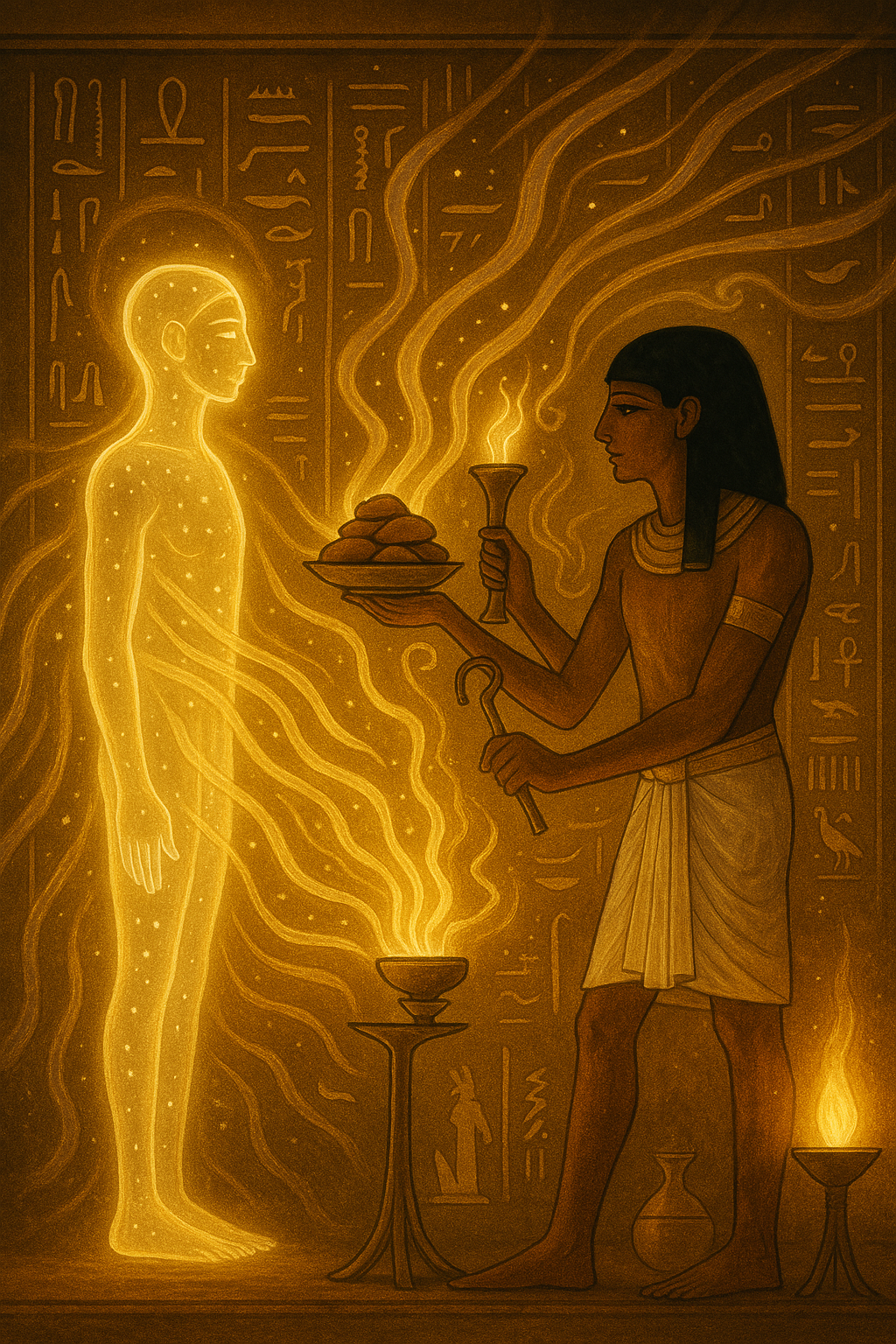
🗝️ Chapter 34: Final Resurrection, When the Name Is Eternal
“Ren-a em djed, akh-a em pet.”
“My name is spoken, my Akh is in the sky.”
Book of the Dead, Spell 25
What is resurrection, really?
It is not revival of the body. It is the preservation of memory, the Name carried through death, trial, and fire. When your Ren remains spoken, your light continues.
Egyptian resurrection is not resuscitation, it is transformation. The soul becomes Akh, the Ka is fed, and the Ren, the vibrational signature of the Self, is sealed in the scrolls of the stars.
To achieve resurrection is to write yourself into the structure of reality. To become known by the gods, not for deeds or titles, but for essence. You become a line in the sky, a note in the eternal chord.
“Ren djeser, kheperu em ankh netjer.”
“The sacred name, becoming in divine life.”
Tomb of Seti I
The highest resurrection is not granted, it is earned through coherence. When you speak truth, nourish your Ka, remember your path, and shine as Akh, your name becomes a living word in the fabric of the cosmos.
⚡ TL;DR
- Resurrection in Egyptian thought is soul-transformation, not physical reanimation.
- The Ren (name) is the carrier of soul-essence, if remembered, the soul endures.
- Final resurrection occurs when the name is sealed in truth and light, becoming part of the divine order.
- This is achieved through alignment with Ma’at, radiant Akhhood, and soul integrity.
- You do not resurrect by force. You resurrect by resonance.

🌀 Chapter 35: Gnostic Reflections, Memory, Light & the Divine Self
“If you bring forth what is within you, what you bring forth will save you. If you do not bring forth what is within you, what you do not bring forth will destroy you.”
Gospel of Thomas, Logion 70
The Egyptian Akh and the Gnostic Divine Spark speak of the same inner technology: a soul that remembers, purifies, and returns.
These are not doctrinal equivalents, they are archetypal mirrors. Both traditions offer symbolic maps of the immortal Self: one as starfire, one as divine seed. Each path names the same secret: You carry what the gods are looking for.
Both teach that death is not an end. It is a proving ground, a mirror, a gate. And the one who passes is not the ego or the mind. It is the truthful essence within, called Ren, Akh, or Spark.
The Archons of the Gnostics, like the Gatekeepers of the Du”st, test the soul. They tempt it with fear, illusion, and false light. But the one who knows their Name, who speaks with coherence, cannot be detained.
Whether crossing the Bardo, the Astral Threshold, or the Field of Reeds, the Gnostic path and the Egyptian path converge on this: You are not saved. You are revealed.
“Let him who seeks, not cease seeking until he finds. When he finds, he will be troubled. When he is troubled, he will marvel. And he will reign over all.”
Gospel of Thomas, Logion 2
The Akh is your future memory. The Spark is your hidden self. And resurrection is the moment you remember who you've always been.
⚡ TL;DR
- The Akh and the Gnostic Divine Spark describe the same core reality, the awakened, immortal Self.
- These parallels are symbolic archetypes, not one—to—one doctrines.
- Both traditions speak of trials after death, not punishment, but purification.
- Naming, remembering, and aligning are the true tools of liberation.
- The true resurrection is when light and memory unite, and you become the name you were always meant to speak.
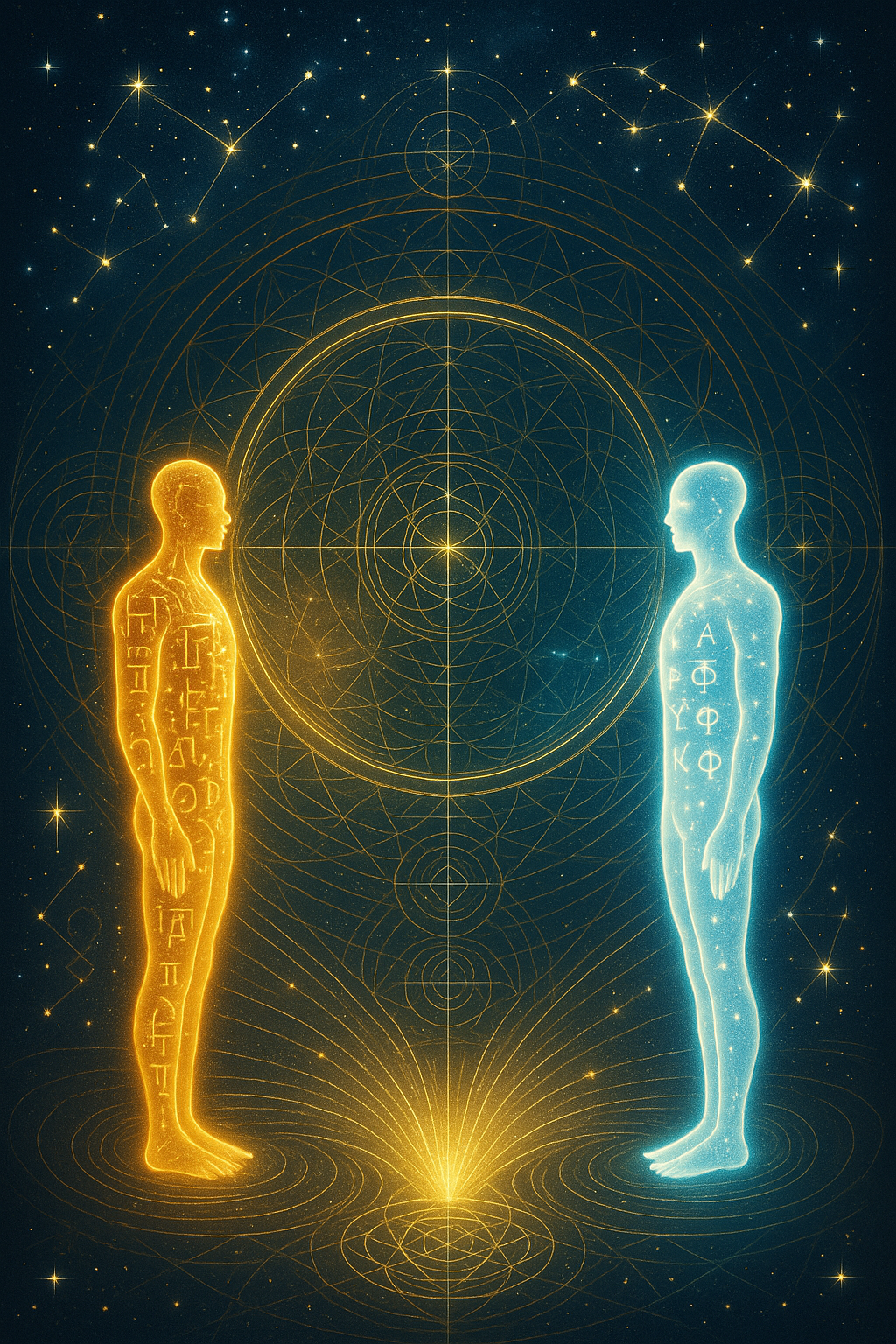
🛠️ Practicing the Egyptian Mysteries
Resurrection does not begin in the tomb. It begins in your choices, your memory, your offerings. These practices awaken the Akh, and prepare the soul to pass the Scales:
- Feather of Ma’at Reflection
Each night, place your hand on your heart. Whisper: “Was I light today?” Recall moments of truth, harmony, or error. Offer a silent vow for balance. - Ka Offering Journal
For 21 days, write one energy gift you gave, a meal, a smile, a hard truth. Title each entry:Date | Gift | Intent | Afterglow. These feed your subtle body. - Name Invocation
Speak your full name aloud each morning. See it rise in golden light. Say: “This name will not be forgotten.” Align with it. Live by it.
To walk as Akh is to remember. To weigh lightly. To live now as if you had already passed through death, radiant, upright, eternal.
🧠 Scroll III Quiz: Will You Pass the Scales?
1. What does the Field of Reeds represent in Egyptian cosmology?
Correct. The Field of Reeds mirrors your soul’s alignment with Ma’at, it is a reflection, not a reward.
2. What is weighed against the heart in the Hall of Two Truths?
Correct. The Feather of Ma’at is the cosmic standard, light, pure, and without distortion.
3. What happens to a soul devoured by Ammit?
Correct. Ammit does not punish, she deletes. The soul is erased if it fails the resonance test.
4. What is the Akh in Egyptian soul anatomy?
Correct. The Akh is the transfigured soul, immortal, luminous, and coherent.
5. Reflective: If you faced 42 divine aspects today, what truth would you hesitate to confess?
Insight: Confession is not for judgement. It is for memory. Your honesty opens the next gate.
📖 Glossary
- Akh
- The radiant, immortal form of the soul, a union of Ka, Ba, and Ren, transfigured into divine light.
- Field of Reeds (Sekhet-Aaru)
- The paradisiacal realm reflecting the soul’s actions and alignment with Ma’at, the mirror world before final ascent.
- Feather of Ma’at
- The metaphysical standard of cosmic truth, harmony, and balance, used to weigh the heart in judgement.
- Ren
- The name of the soul, a vibrational signature which, if remembered, preserves the soul’s identity across realms.
- Ka
- The vital essence or energetic double of a person, requiring nourishment and offerings for continued strength and presence.
- Ammit
- The Devourer, a composite beast who erases unworthy souls whose hearts fail to balance with Ma’at’s feather.
- Negative Confession
- 42 declarations of innocence spoken before divine judges, affirming alignment with Ma’at’s principles.
- Imperishables
- The circumpolar stars that never set, representing the eternal home of the Akh in the heavens.
🎨 Creative Prompt: Name in the Stars
Write a poem, draw a glyph, or design a symbol that represents your soul’s journey through the Du”st. What form would your Akh take? What truth would your heart reveal before the Scales?
Would your name rise like a constellation? Would your Ka leave offerings in return?
Want to share it?
🗣️ Discussion: What Name Will You Carry?
If your soul were weighed today, would it remember its name? Would it resonate with truth?
- What part of you still feels heavy — what must be released to rise?
- Have you ever experienced a moment of radiant alignment — a spark of Akhhood?
- What offerings do you give your Ka, your energy body, in this life?
Reflect silently or share your insights using #TheGnosticKey:
📚 Egyptian Study & Source Texts
To deepen your understanding of the Egyptian afterlife, soul anatomy, and the mysteries of the Akh, explore these sacred and scholarly texts. They bridge ancient spells with modern esoteric insight.
🔍 Recommended Reading
- The Egyptian Book of the Dead (Papyrus of Ani) — A guide through the Du”st, containing spells, confessions, and soul technologies for resurrection.
- The Pyramid Texts — The oldest known religious writings, offering hymns and utterances for kingly ascension and identification with the stars.
- The Coffin Texts — Middle Kingdom expansion of t he Pyramid Texts, bringing resurrection teachings to non-royal souls.
- The Temple Inscriptions of Karnak & Edfu — Contain rich depictions of divine names, offerings, and the architecture of afterlife ascent.
- Temple of Man — by R.A. Schwaller de Lubicz, A profound metaphysical reading of Egyptian architecture as cosmic anatomy.
📖 Sources & Translations
- Faulkner, R. O. (Trans.). (2008). The Egyptian Book of the Dead: The Book of Going Forth by Day. Chronicle Books.
- Allen, J. P. (2005). The Ancient Egyptian Pyramid Texts. Society of Biblical Literature.
- de Lubicz, R. A. (1998). The Temple of Man. Inner Traditions International.
- Hornung, E. (1999). The Ancient Egyptian Books of the Afterlife. Cornell University Press.
- Assmann, J. (2005). Death and Salvation in Ancient Egypt. Cornell University Press.
🌌 Continue the Journey
You've passed through the Hall of Two Truths. Confessed before the 42. Watched your name rise among the stars.
But this is not an ending, it is a becoming.
Every moment is a trial of resonance. Will you live light enough to fly?
This scroll is one fragment of a greater resurrection code. The Gnostic Key’s Afterlife Series weaves teachings from the world’s sacred traditions, each a map, a mirror, a gate.
Explore the other soul paths:
- Gnostic Christianity, Christ the Revealer and the Map of Return
- Sufi Islam, Barzakh, the Beloved, and the Spiral Path
- Jewish Kabbalah, Ascent Through the Sefirot and the Breath of Binah
- Buddhist Afterlife, Karma, Bardo, and the Diamond Path
- Ancient Egypt, The Akh, the Scales, and the Star Map
- Mesoamerica, Xibalba, Sacrifice, and the Spiral of Time